Stade Vélodrome de Rocourt
"It was the last show...". Home and pride of the Great Old Club for seventy-three years, it will end up in dust and replaced by a theatre.
The stars of football and cycling have been replaced by those of movies. But it's not for a comedy...

The great beginnings
Oscar Flesch, director of the Charbonnage Ans-Rocourt enters the Football Club Liégeois committee on January 23, 1919.
Quickly vice-president, he will be the promoter of an ambitious project: the construction of a stadium on the heights of
Sainte-Walburge, in Rocourt. The Cooperative Society of Stadium of FC Liégeois will be created on May 11, 1920 and will buy a wooded
property of 12 hectares.
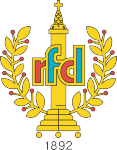
The Stade Vélodrome Oscar Flesch will be inaugurated on August 28, 1921 by the matches FC Liégeois-Olympique Lille (2-3) and
Standard-Union Saint-Gilloise (1-2). It is also this year that King Albert conferred the title of "Royal" on FC Liégeois. The capacity
already amounts to some 30.000 places.
Originally, the stadium has a covered seats stand, a small standing stand also covered on the other side of the field and
behind one of the goals, a large unsheltered terrace. Let's not forget the "Chalet" on the left of the seats stand. For
other sports, there is an athletics track and a concrete velodrome surrounding a football field.
The stadium becomes property of FC Liégeois on December 31, 1937.
During the War, the Club Liégeois remains very popular. Thus, 10,000 spectators will attend the derby against the Club Sportif Verviers
and 15,000 again a year later.
In 1945, 22,700 people celebrate the return of the Old Club in First Division.
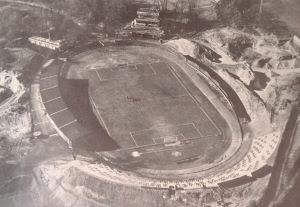
Development & renovations
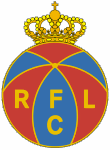 Thanks to Liège Province Governor Joseph Leclerq, extension work will be carried out in 1950 to increase the capacity to 40,000 places.
It is on this occasion that is built the huge side standing stand.
Thanks to Liège Province Governor Joseph Leclerq, extension work will be carried out in 1950 to increase the capacity to 40,000 places.
It is on this occasion that is built the huge side standing stand.
In January 1955, Liège played a gala match against the Argentine club Newell's Old Boys. Note that FC Liège will have to pay
compensation to clubs Ans and Bressoux who played a match at the same time.
One year later, the installation of artificial lighting allows night games to take place. The Hungarian club of MTK Budapest is
invited for this inauguration on November 10, 1956. As for the first league match in the spotlight, it will take place on March 25, 1957,
against Royal Antwerp (2-1 victory).
To celebrate the 75th anniversary of the club and to ensure a better comfort, a new seating stand of about 5.000 seats comes out
of the ground in 1967 and replaces the original sitting stand. Very modern for the time (with a cantilever roof), it will be
the new pride of the old stadium of Rocourt. The club invited for the occasion is Ajax Amsterdam (0-1 defeat, August 23).
Beside football, the cycling track is also used for big events. Thus, the UCI Track Cycling World Championships were organized at
the Velodrome Stadium in 1950, 1957, 1963 and 1975. In addition, ten arrivals from the famous Liège-Bastogne-Liège classic will
take place on the heights of Sainte-Walburge. The last will be in 1973 with the victory of Eddy Merckx.
The lighting was completely renovated and was inaugurated on August 19, 1972. At that time, RFC Liégeois had the best
lighting in the country (1750 lux).
The last works took place from 1986 to 1992 with the construction of the skyboxes in the stand (between the two tiers)
and the renovation of the facade of this one : construction of offices and a refreshment bar and a superb canopy. The
business-seats, built in front of the "Chalet" will complete the "final" configuration of the Stade de Rocourt. In 1986,
the stadium changed its name: we will now speak of Stade Jules Georges, president of the club from 1971 to 1983.
The capacity is lowered to 25,000 places, and this for security reasons.

In 1991, the club prepares to celebrate its centenary and changes its name : Royal Club Liégeois.
Until then, everything is going well for the club. The participation in the European Cup is regular, the public is present and
a Cup of Belgium comes to fill the prize list of the club in 1990.
Instead of being the revival of the club, it will be rather its inexorable fall. Suddenly, the situation will become critical at all levels.
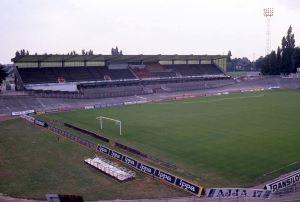
Decline & Euro 2000
During the 1994-1995 season, the sporting level drops dramatically. While previous seasons end in the middle of the
standings, at the end of this season, relegation could not be avoided. The club had not experienced relegation since 1935.
Each year, the club had to sell its best players to hope to keep the accounts afloat, and inevitably, the quality of the team
dropped drastically. The youths of the club were asked to ensure the sporting level but they were obviously not ready. Every year,
the deficit was growing again and again.
If on one side, the sporty aspect declines quickly, on the other, the financial aspect begins to become an obsession for the club.
Despite the sale of its best players each year, the deficit was growing again.
The problems of infrastructures appeared when, under the chairmanship of André Marchandise, the stadium became currency to repay
debts and investments. To succeed in liquidating the stadium and the grounds by letting "survive" what was left of the Matricule 4,
the management had split the RC Liégeois's assets in two : the sporty aspect and the real estate.
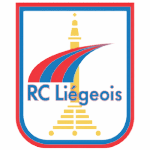 For the stadium, things got worse at the beginning of the 1994-1995 season.
For the stadium, things got worse at the beginning of the 1994-1995 season.
First, it was discovered that the lighting pylons threatened to collapse due to rust. They were quickly disassembled and the
club was obliged to play on Sunday afternoon. Then, after the winter, it was found that the roof of the standing stand
was showing worrying signs of fatigue and that the foundations of the velodrome were in poor condition.
However, the stadium still hosted FC Bruges for a European venue a few months ago - FC Bruges were struck a stadium ban at
the time and were to play their match 200 km from Bruges.
It was enough, the stadium was declared non-compliant and definitely closed at the end of the 1994-1995 season. The closure forced
the club to find refuge far from home.
Zvonko Varga scored the last goal of RFC Liégeois in Rocourt against La Gantoise, November 9, 1994.
The last match took place on November 26, 1994 : RC Liégeois-Cercle Brugge (0-0).
It has never been clearly demonstrated that the stadium was totally unfit for football matches : in a short year, the velodrome changed from a stadium meeting UEFA and the Belgian Football Federation security standards, to a dangerous and unhealthy slum. It should also be noted that the stadium and all the grounds were originally owned by the club and thus guaranteeing the durability of the club. At the same time, the first rumors of selling the site to build a cinema appeared. The management, via its director Pierre Delahaye, hastened to refute everything energetically...
For two long years, it will be delivered to vandals and looters. Everything is ravaged, the air of play has airs of wasteland
and no window survived.
The wreckers went into action at the beginning of 1997 to make room for a film complex of the Kinepolis group.
Note that the demolition, which was only a formality given the deplorable state of the stadium, did not prove to be a part of
pleasure. The so-called dilapidated stadium was perhaps only lie. No matter, it was already too late to save the old velodrome.
The big cold and impersonal stadium is now only a sad memory...
There will be very few remnants of the stadium : a commemorative stone ("Oscar Flesch Stadium") in the Kinepolis façade and a few walls that passed behind the standing stands.
It’s also interesting to note that Standard de Liège lost in only two years its two biggest local competitors : FC Liège of course
but also FC Seraing, simply absorbed by Standard in 1996.
As for the Euro 2000, which was getting closer and closer, the disappearance of the velodrome was blessing for Sclessin. Nothing
prevented the choice of Stade Maurice Dufrasne to host the European Championship of Nations in Liège. Where Standard would benefit
from a brand-new stadium, FC Liège would become a stadiumless club.
Another disturbing fact : the manager of FC Liège, Pierre Delahaye, found refuge very quickly after the descent of the Great Old Club
in D3 at... Standard Liège.
We will, of course, speak only of curious chance...
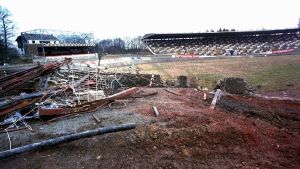
A wandering club for two decades
Since the disappearance of the stadium of Rocourt, FC Liège is experiencing all the trouble in the world to find a new home.
Having to finish the 1994-1995 season between the stadiums of Sclessin (Standard Liège, the hereditary enemy) and Kehrwegstadion (Eupen),
the average attendance goes from 5,000 to less than 1,000 followers.
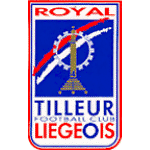
In the following season, FC Liège will try to merge with the moribund neighbor of Tilleur FC to settle at the
Bureaufosse Stadium (1995-1999), and adapt his name at the same time (Royal Tilleur FC Liégeois).
Unfortunately, the Belgian Federation refused the merger and the club fell in Division 3. After a short period of prosperity
when it was believed that the old club was back on track, disillusionment ensconced at an infernal pace. Between a multitude
of bankruptcies, promotions and relegations between Division 2 and Promotion, the club moved several times : at the Pairay Stadium
(in Seraing, between 1999 and 2004), then Ans (2004-2008) before returning in Seraing (between 2008 and 2018). There was even talk
of a move to Tongeren, Visé or Verviers.
Meanwhile, the club regains its historic name, namely the Royal Football Club Liège, as well as its coat of arms.
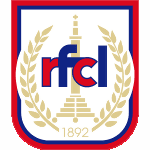
It will finally be necessary to wait until 2015 (twenty years !), so that finally the promises held by the politicians finally
come true.
A brand new stadium will be built on the territory of Rocourt, a few hundred meters from the former velodrome. FC Liège can finally
go home.
Soberly called "Stade de Rocourt", however, it has nothing to do with the venerable Oscar Flesch Stadium. With a maximum
capacity of 8,000 places, it will be a modern stadium. For the moment (in 2019) and given the low sports level of the club, a
temporary stadium of 3,000 places seems to be good enough.
Even if the Club Liégeois will never be the same again without its favorite stadium, the loyal fans of the Matricule 4 - the very first
Belgian football champion - are finally back on the heights of Rocourt.
Pictures
Stade Vélodrome de Rocourt
The velodrome, at its beginnings.
© rfcliege.be
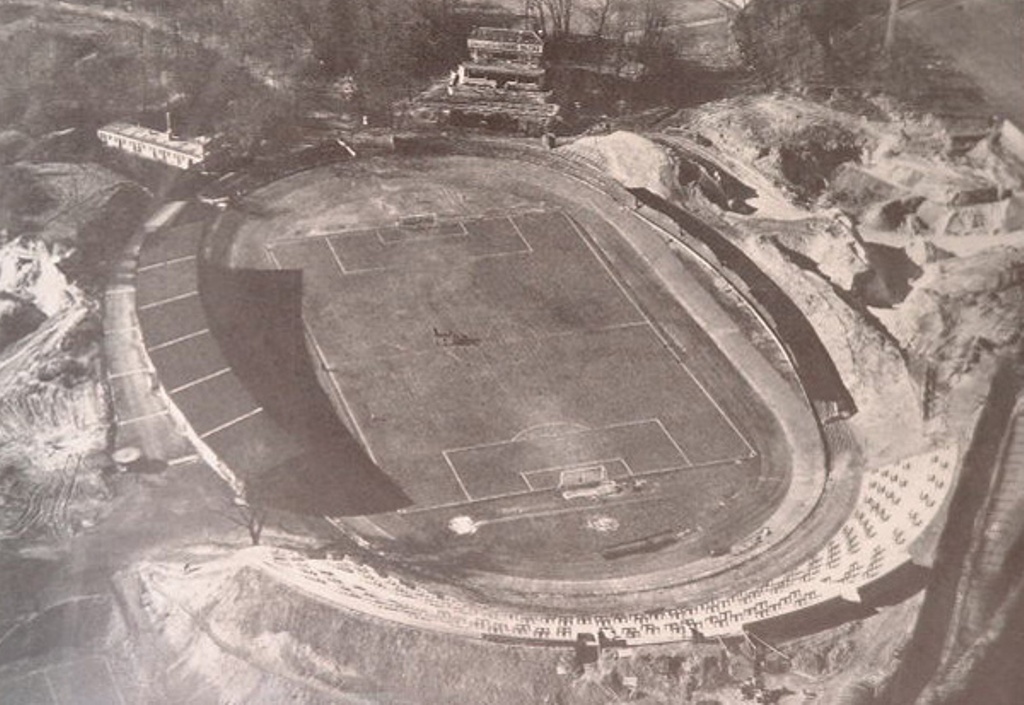
Stade Vélodrome de Rocourt
Aerial view, before the construction of the large side standing stand.
© rfcliege.be
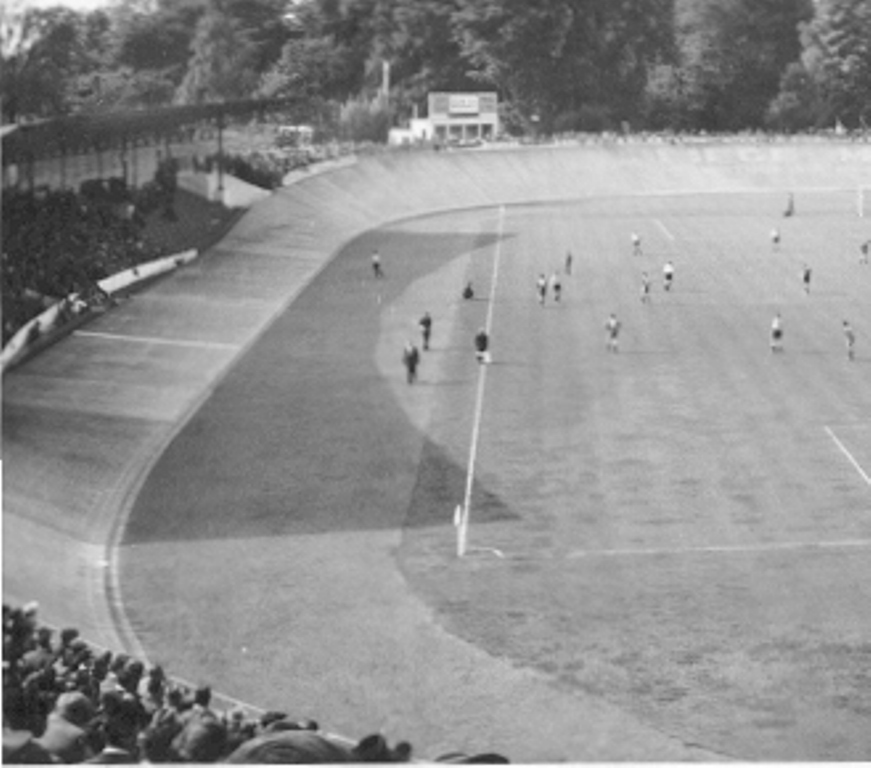
Stade Vélodrome de Rocourt
The original stand, on the left.
© rfcliege.be
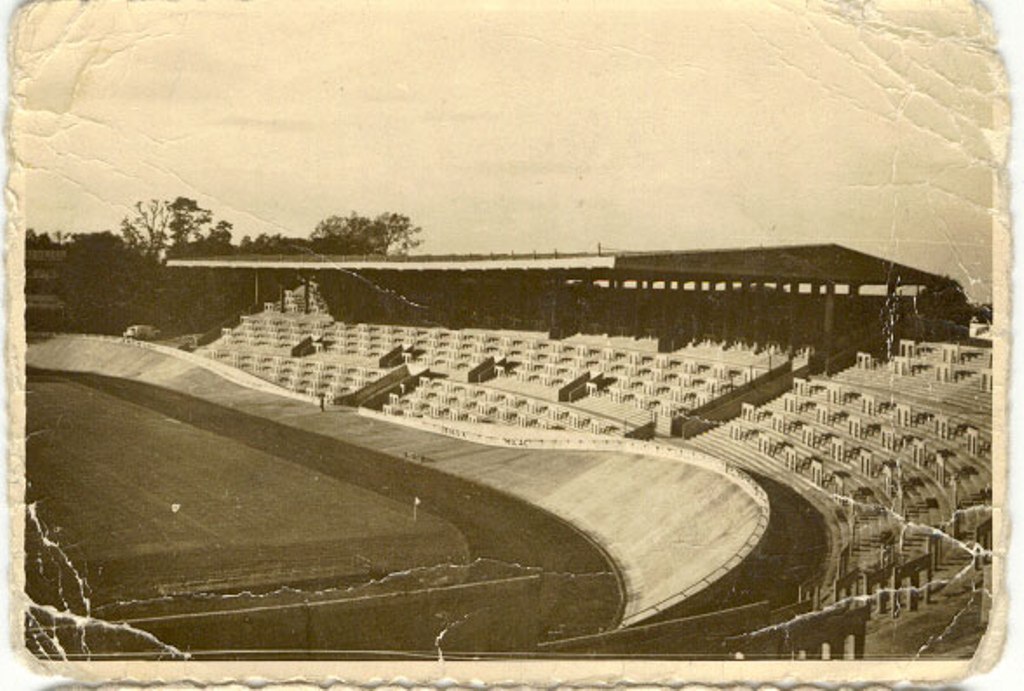
Stade Vélodrome de Rocourt
The huge standing stand, brand new.
© rfcliege.be
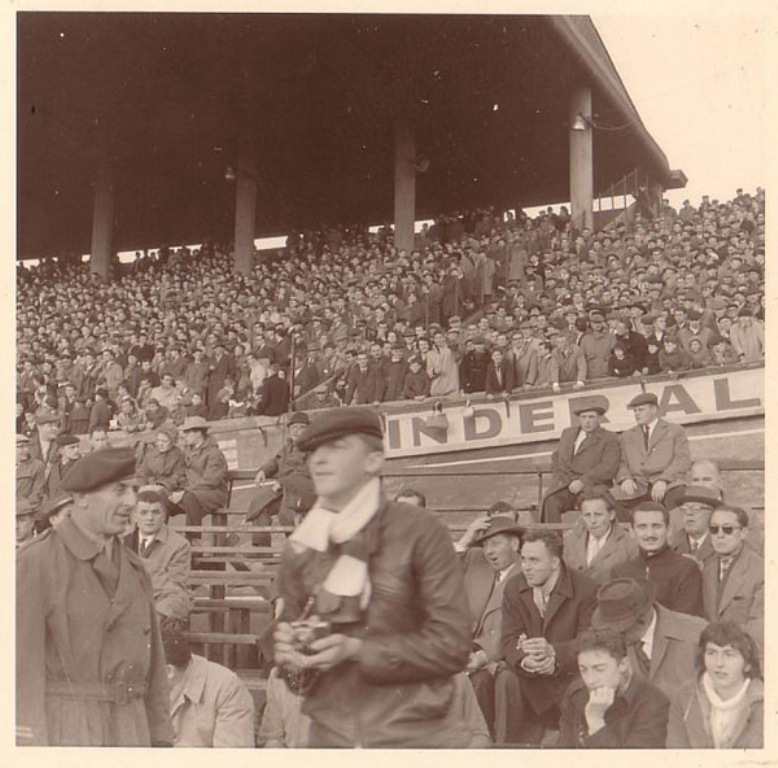
Stade Vélodrome de Rocourt
At the time, FC Liège played regularly sold out.
© rfcliege.be
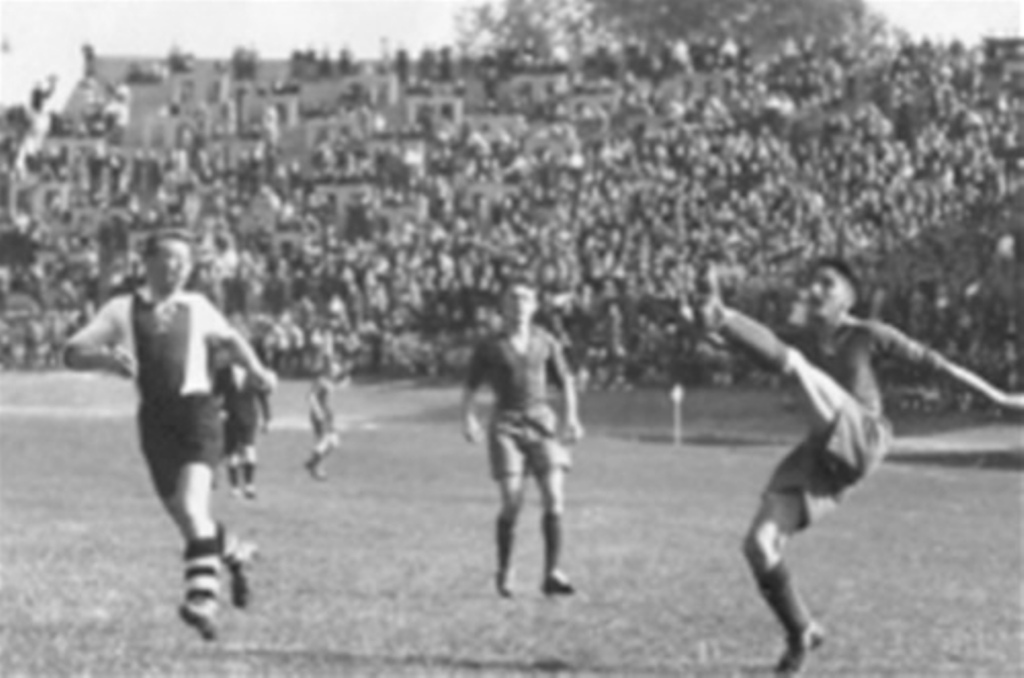
Stade Vélodrome de Rocourt
Match against Racing Brussels in the 50’s.
© rfcliege.be
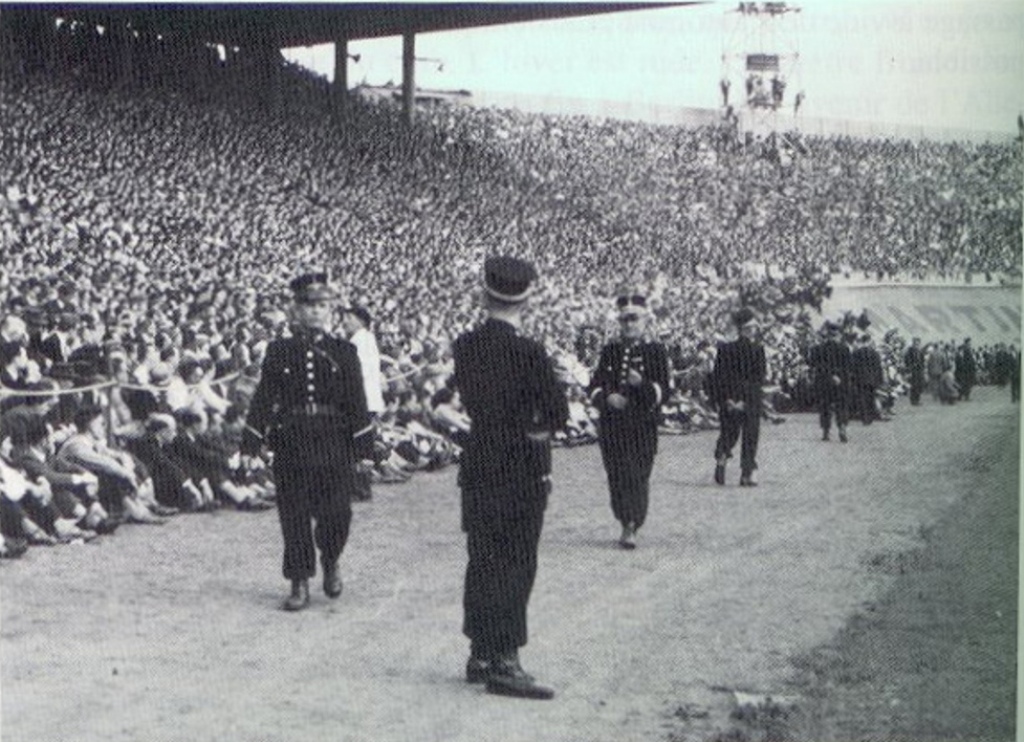
Stade Vélodrome de Rocourt
The cycling track of the velodrome and the lighting pylons stormed by the public too many, during a derby against Standard Liège.
© rfcliege.be
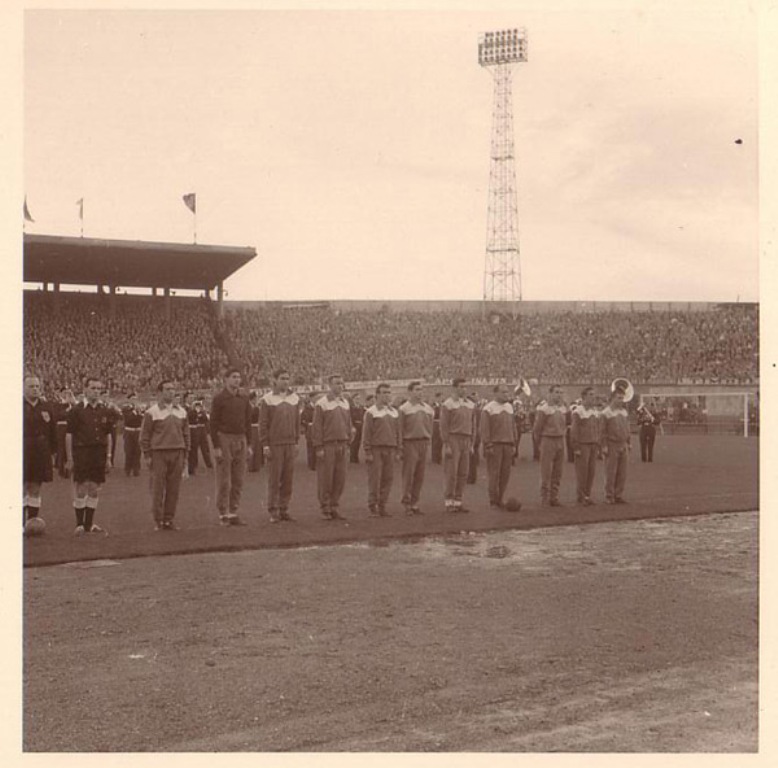
Stade Vélodrome de Rocourt
Lighting system, just commissioned in 1957.
© rfcliege.be
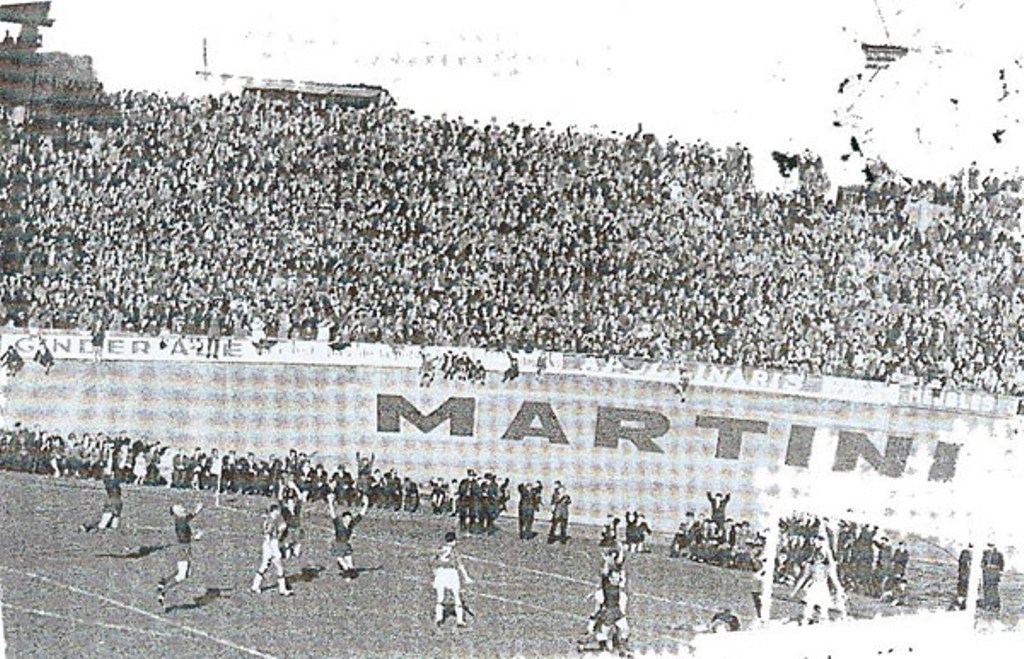
Stade Vélodrome de Rocourt
Another match, during the 50's.
© rfcliege.be
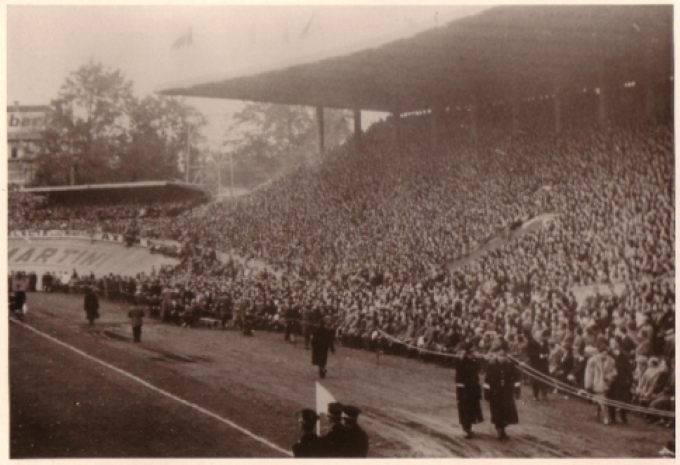
Stade Vélodrome de Rocourt
At the reception of Real Madrid in 1960. Unofficial record of attendance with 50,000 people.
© rfcliege.be
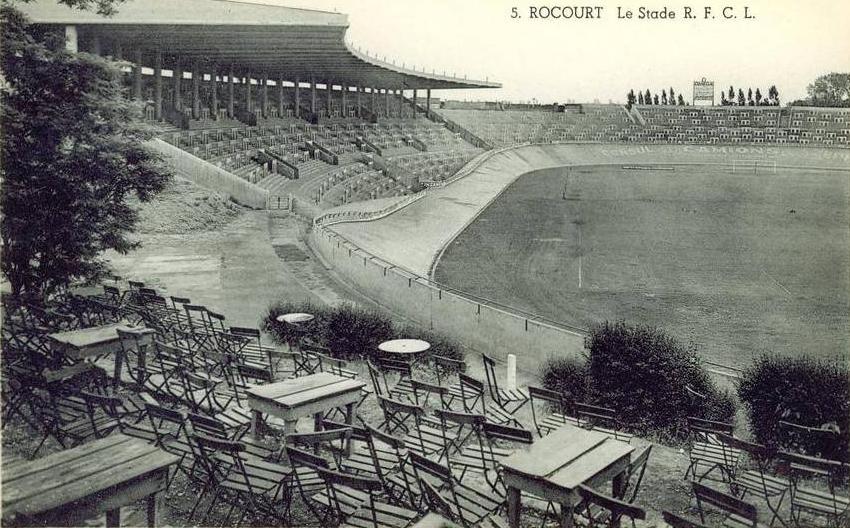
Stade Vélodrome de Rocourt
It must be nice to follow a match from this place !
© rfcliege.be
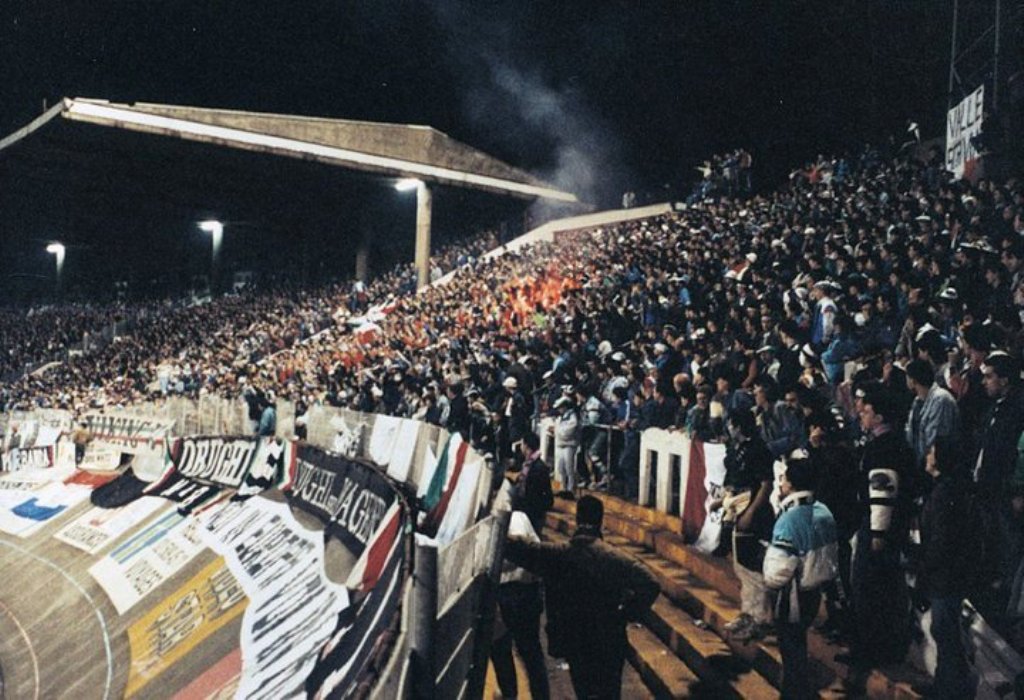
Stade Vélodrome de Rocourt
Supporters of Juventus Turin, during the season 1986-1987.
© rfcliege.be
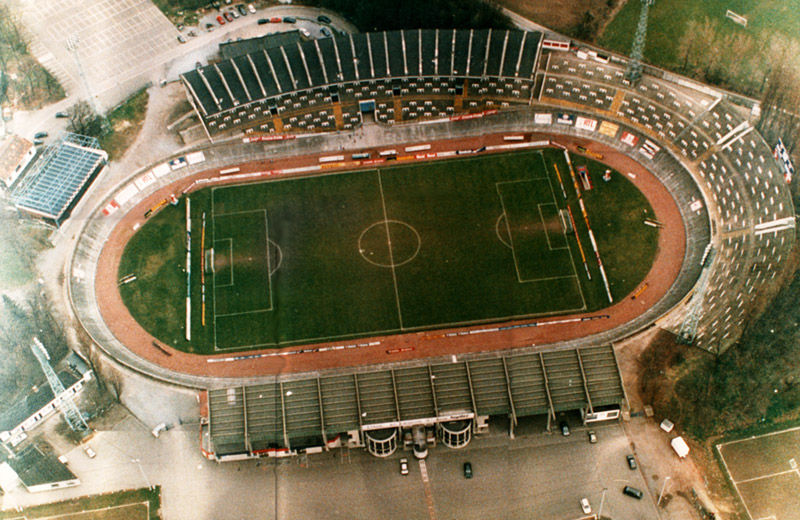
Stade Vélodrome de Rocourt
Aerial view, in the early 90's, after the construction of the new facade of the main stand.
© rfcliege.be
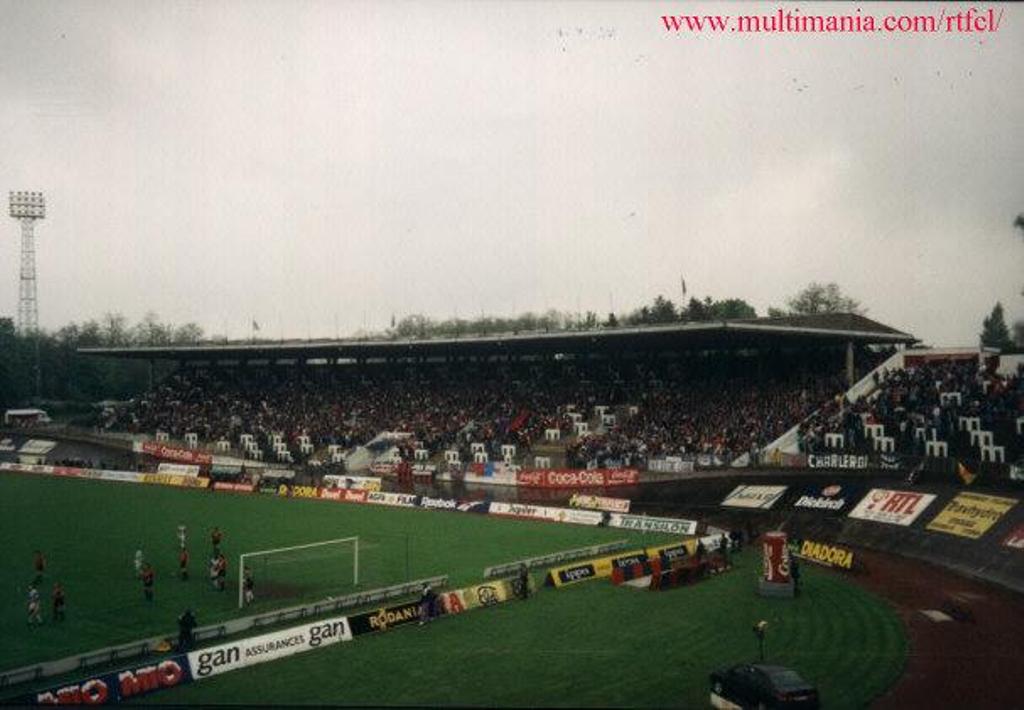
Stade Vélodrome de Rocourt
In a derby against Sporting Charleroi in the 90’s.
© rfcliege.be
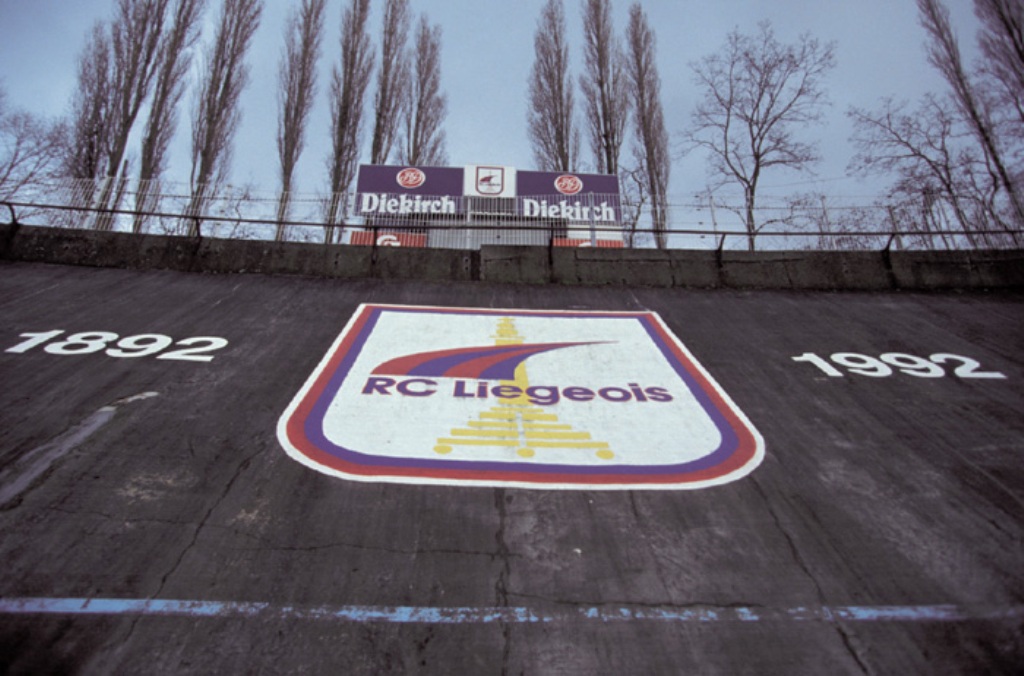
Stade Vélodrome de Rocourt
The new coat of arms of the club, affixed on the velodrome to celebrate the centenary of the club.
© rfcliege.be
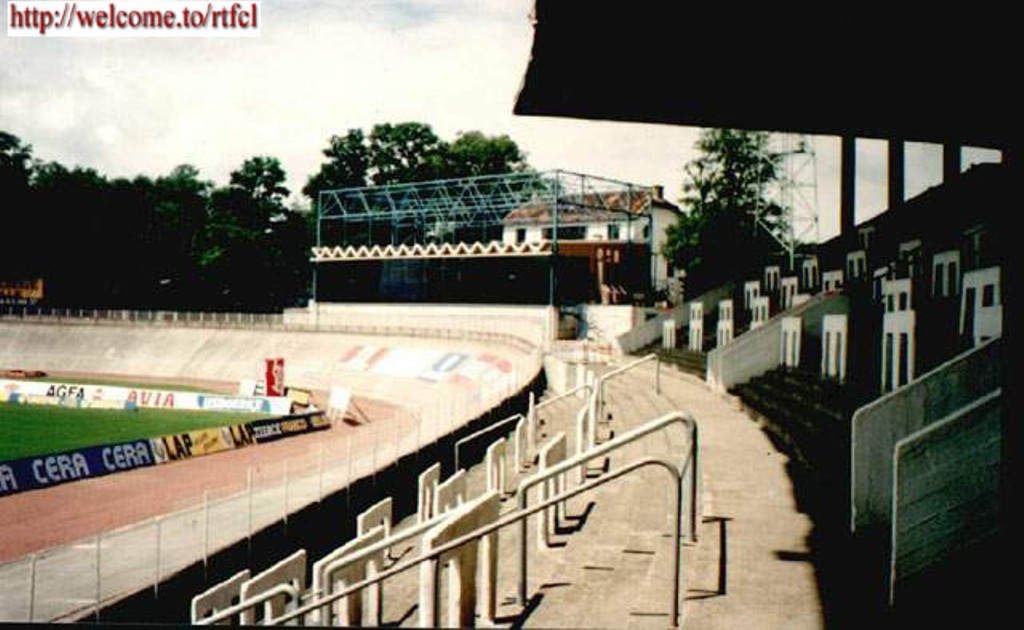
Stade Vélodrome de Rocourt
Business-seats, from the standing stand.
© rfcliege.be
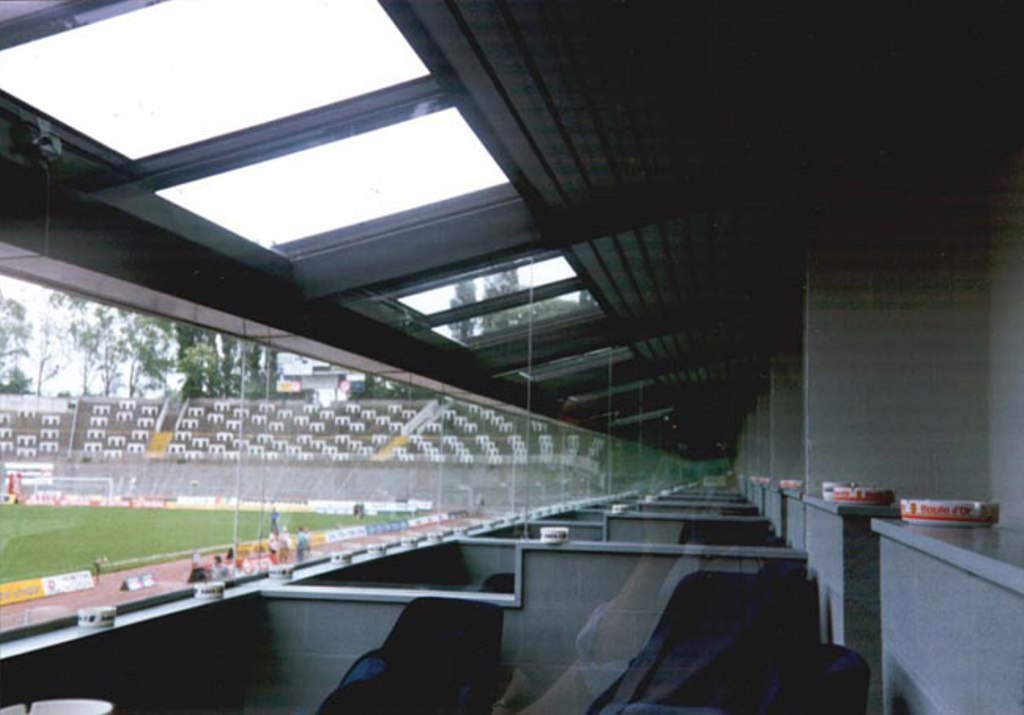
Stade Vélodrome de Rocourt
Skyboxes, built in the main stand.
© rfcliege.be
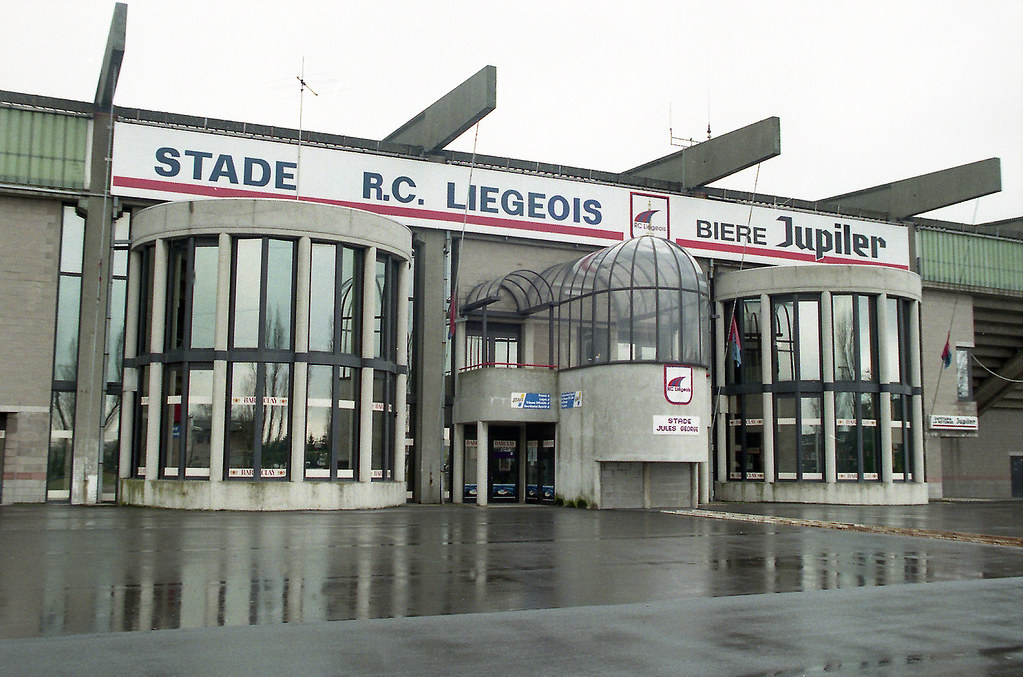
Stade Vélodrome de Rocourt
The new facade of the stand, inaugurated for the centenary of the club.
© Gérard Guissard • Flickr
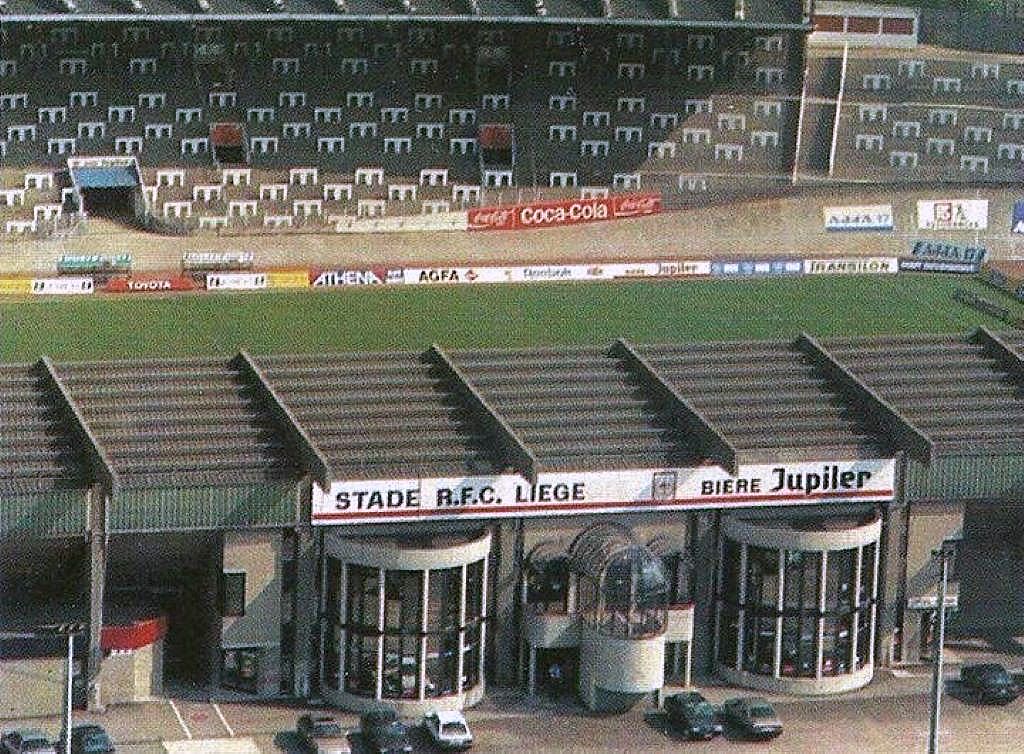
Stade Vélodrome de Rocourt
The stadium almost as a whole.
© rfcliege.be
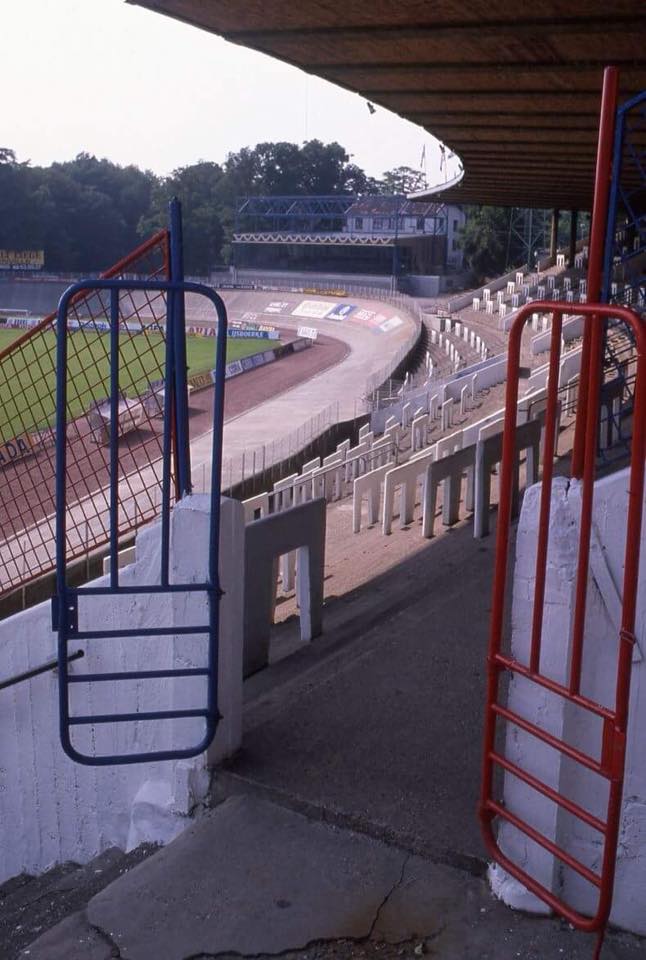
Stade Vélodrome de Rocourt
The entrance to the standing stand with the business-seats at the back.
© Jacques Ninane • Flickr
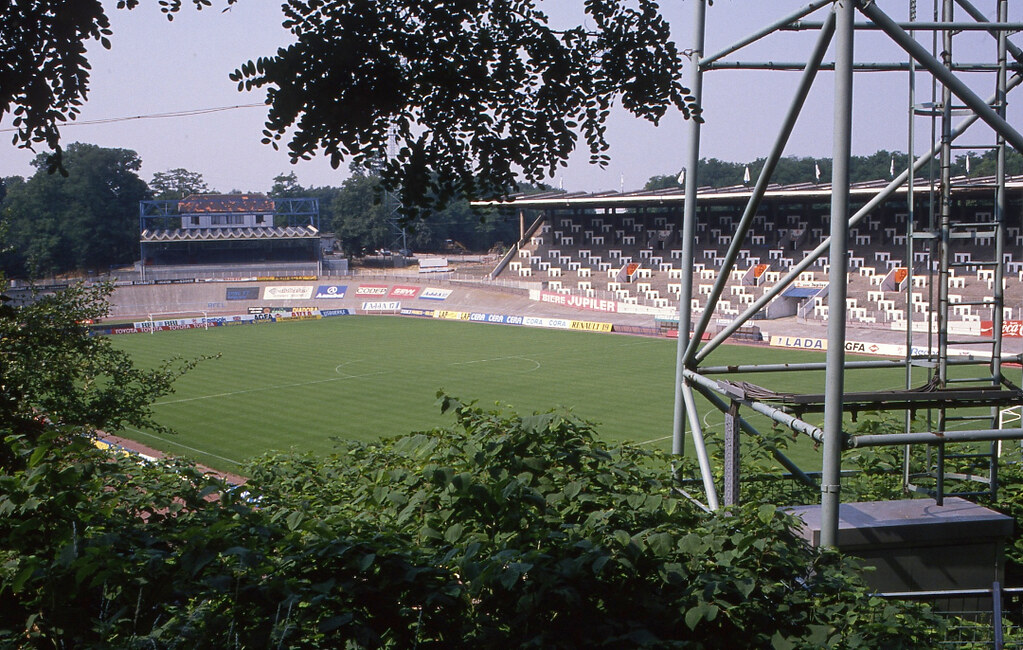
Stade Vélodrome de Rocourt
Inside the stadium.
© Jacques Ninane • Flickr
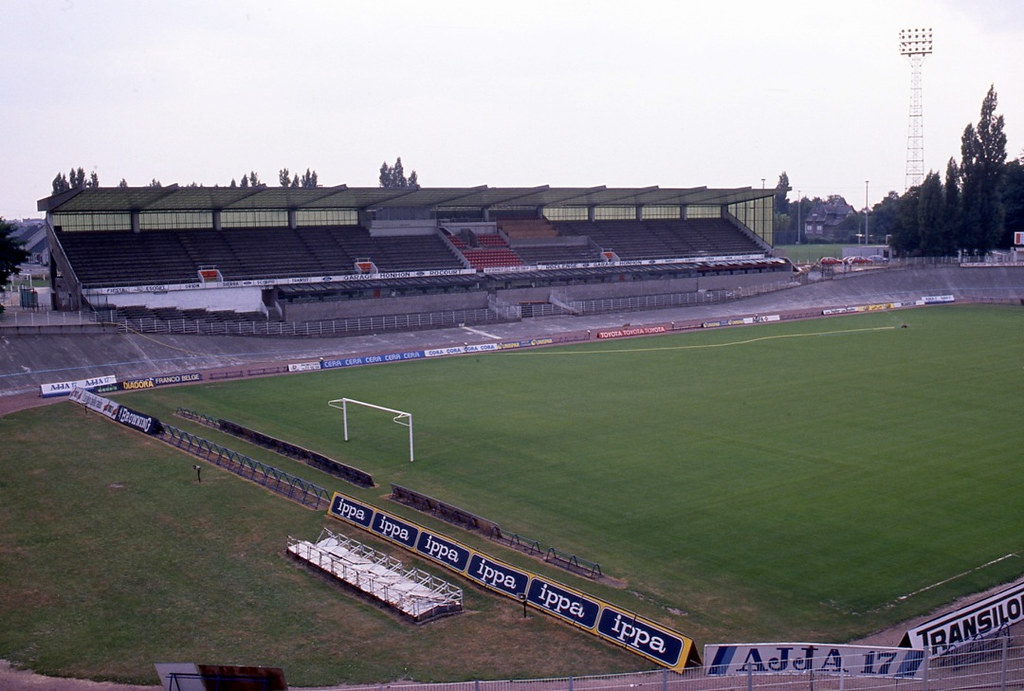
Stade Vélodrome de Rocourt
The main stand of 1967.
© Jacques Ninane • Flickr
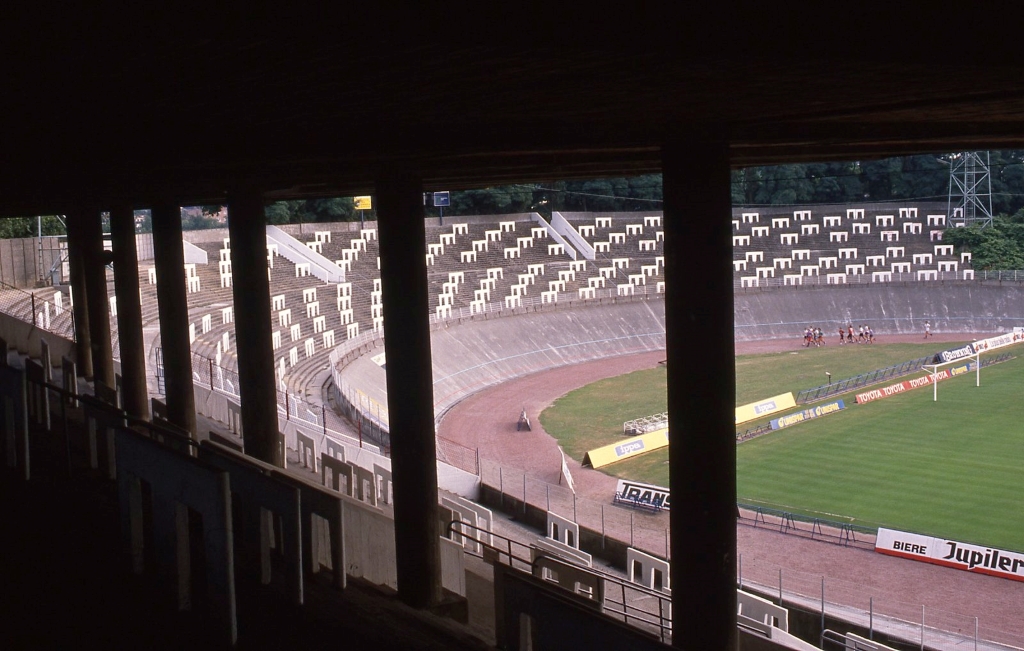
Stade Vélodrome de Rocourt
From the standing stand (1/3).
© Jacques Ninane • Flickr
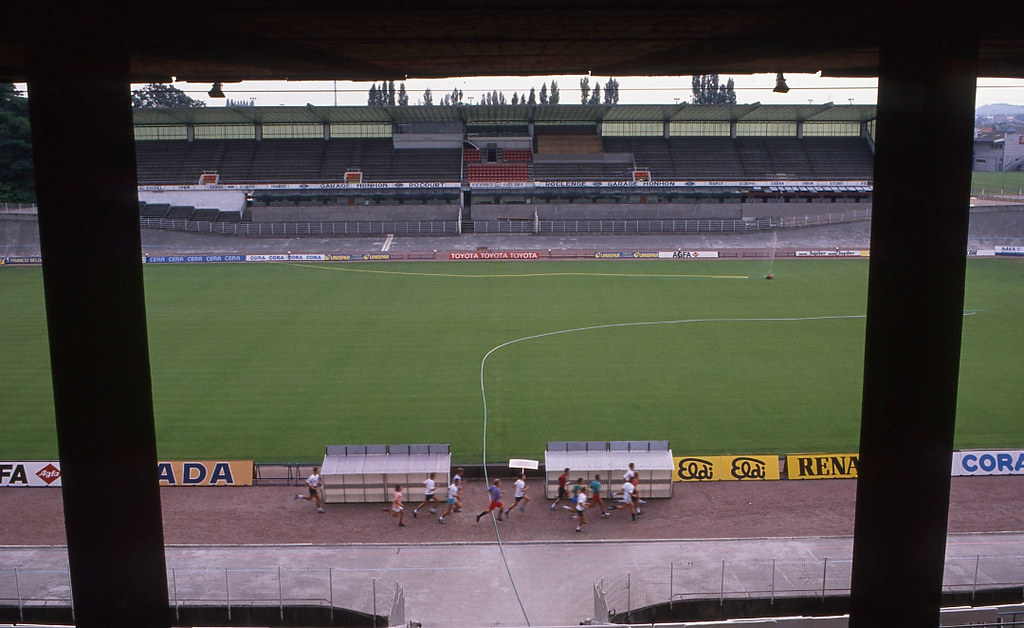
Stade Vélodrome de Rocourt
From the standing stand (2/3).
© Jacques Ninane • Flickr
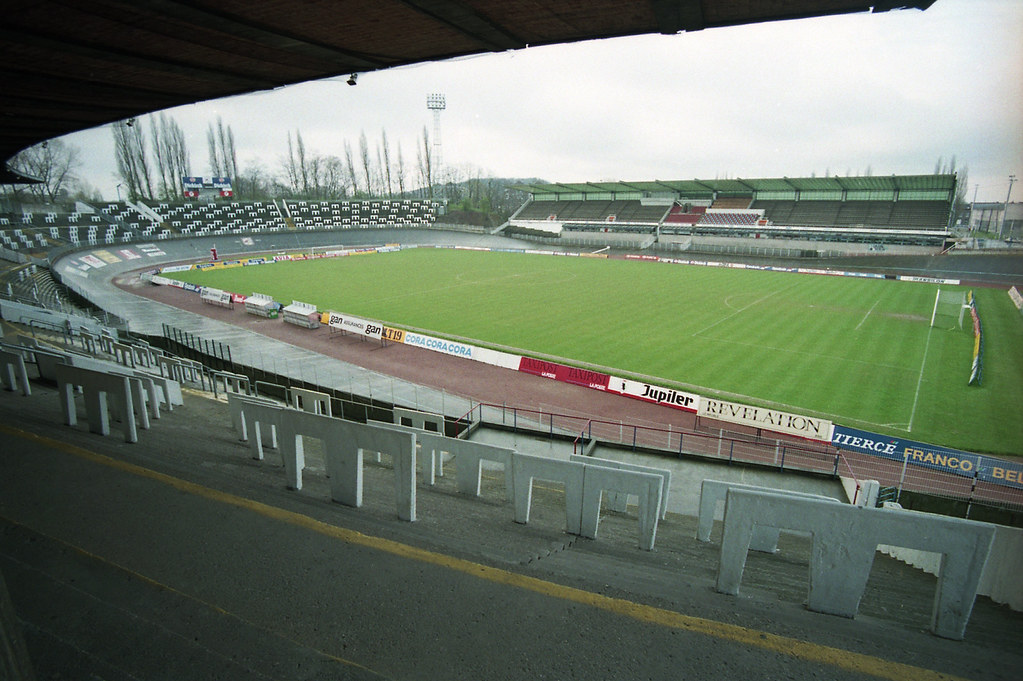
Stade Vélodrome de Rocourt
From the standing stand (3/3).
© Gérard Guissard • Flickr
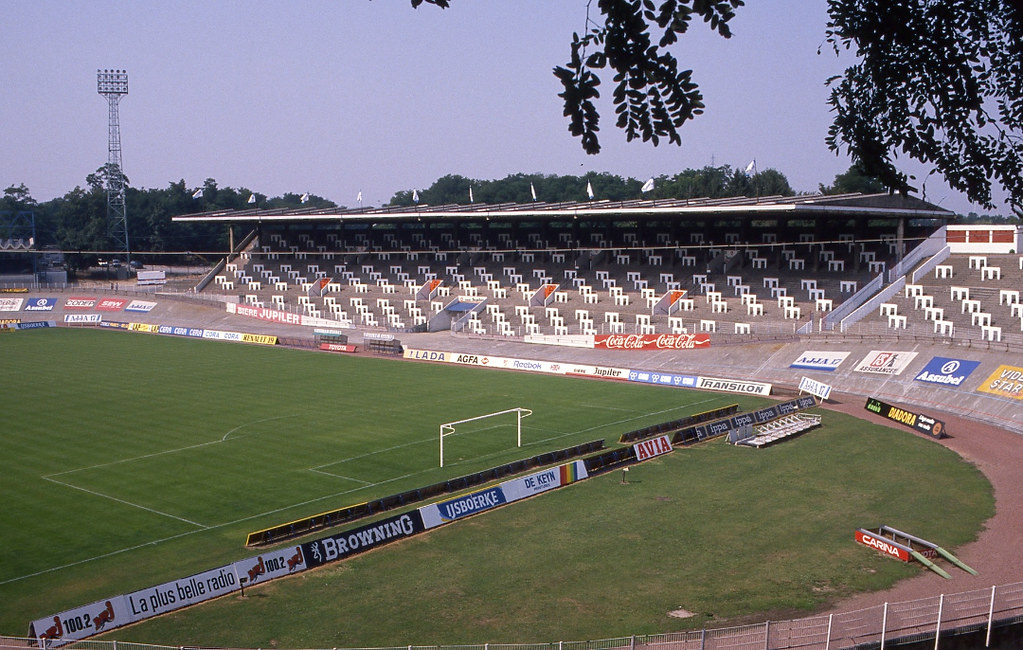
Stade Vélodrome de Rocourt
In the good old days in 1988 (1/8).
© Jacques Ninane • Flickr
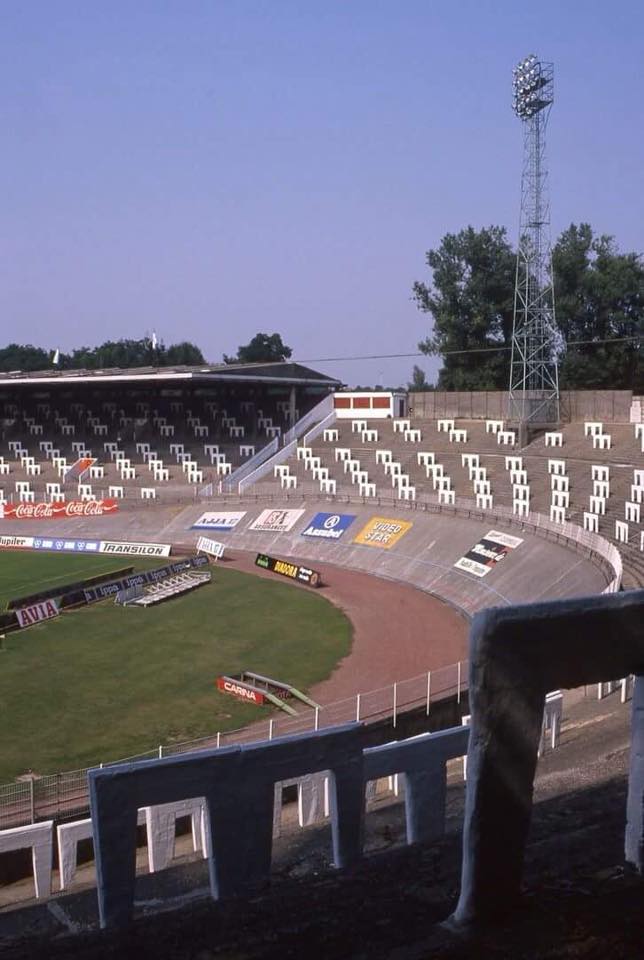
Stade Vélodrome de Rocourt
In the good old days in 1988 (2/8).
© Jacques Ninane • Flickr
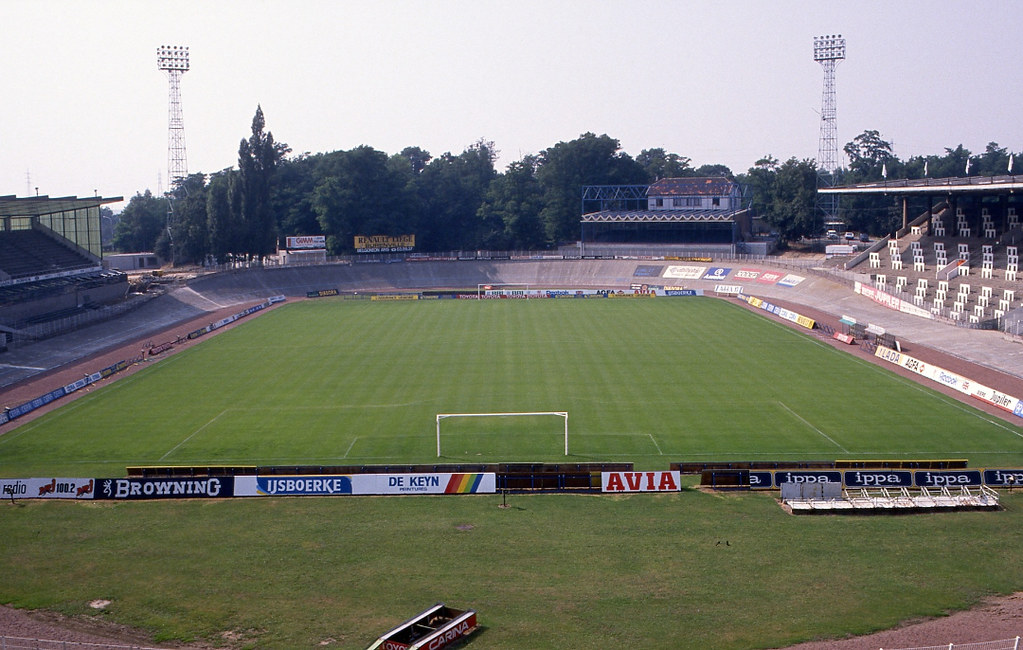
Stade Vélodrome de Rocourt
In the good old days in 1988 (3/8).
© Jacques Ninane • Flickr
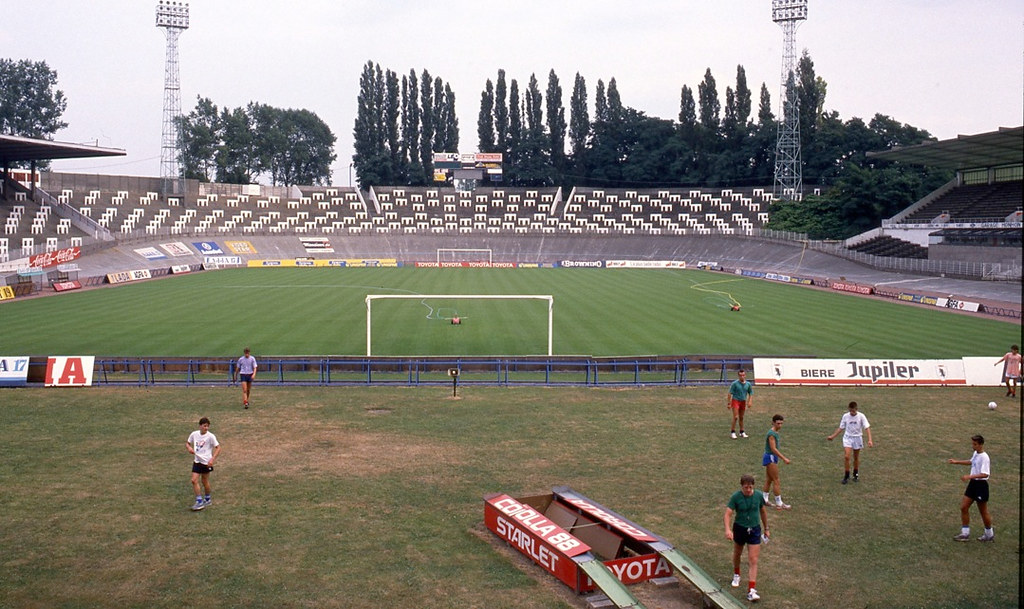
Stade Vélodrome de Rocourt
In the good old days in 1988 (4/8).
© Jacques Ninane • Flickr
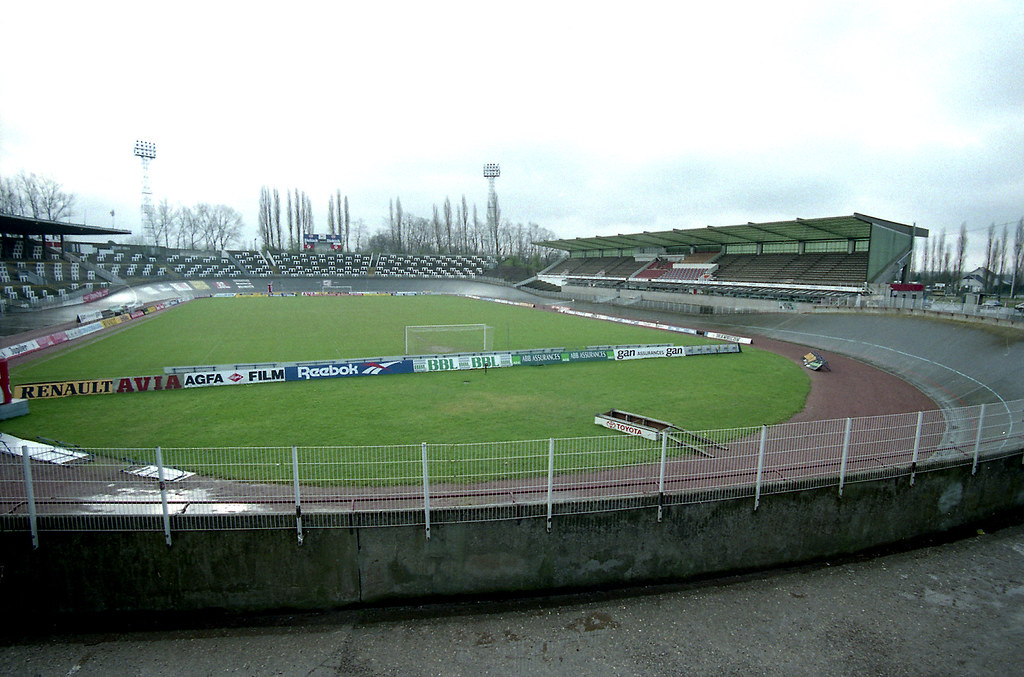
Stade Vélodrome de Rocourt
In the good old days in 1994 (5/8).
© Gérard Guissard • Flickr
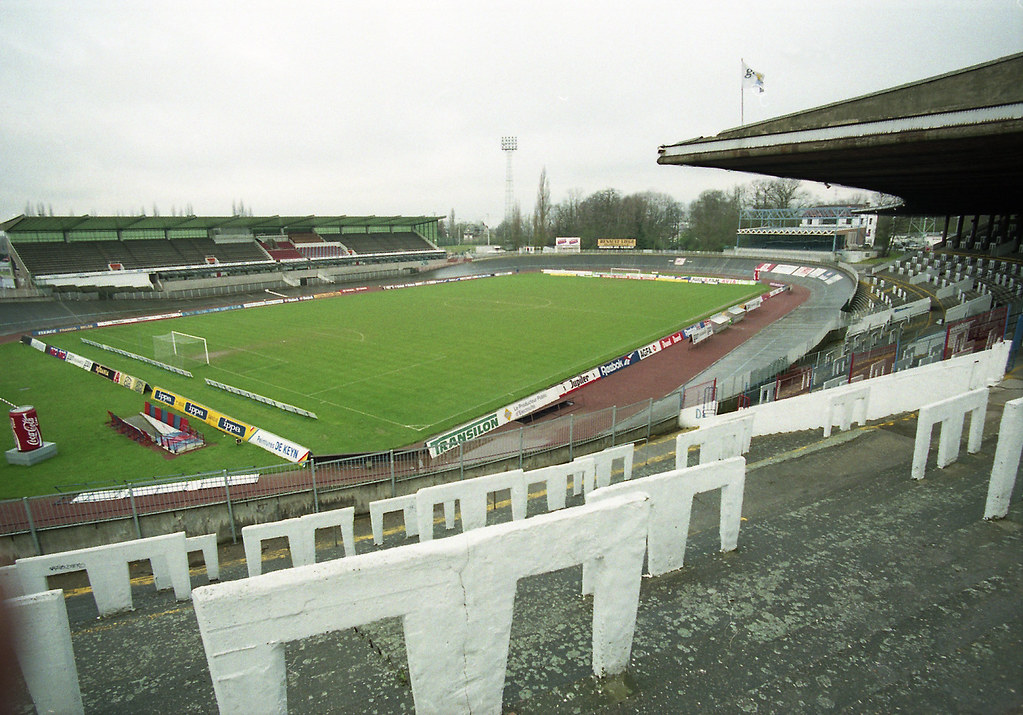
Stade Vélodrome de Rocourt
In the good old days in 1994 (6/8).
© Gérard Guissard • Flickr
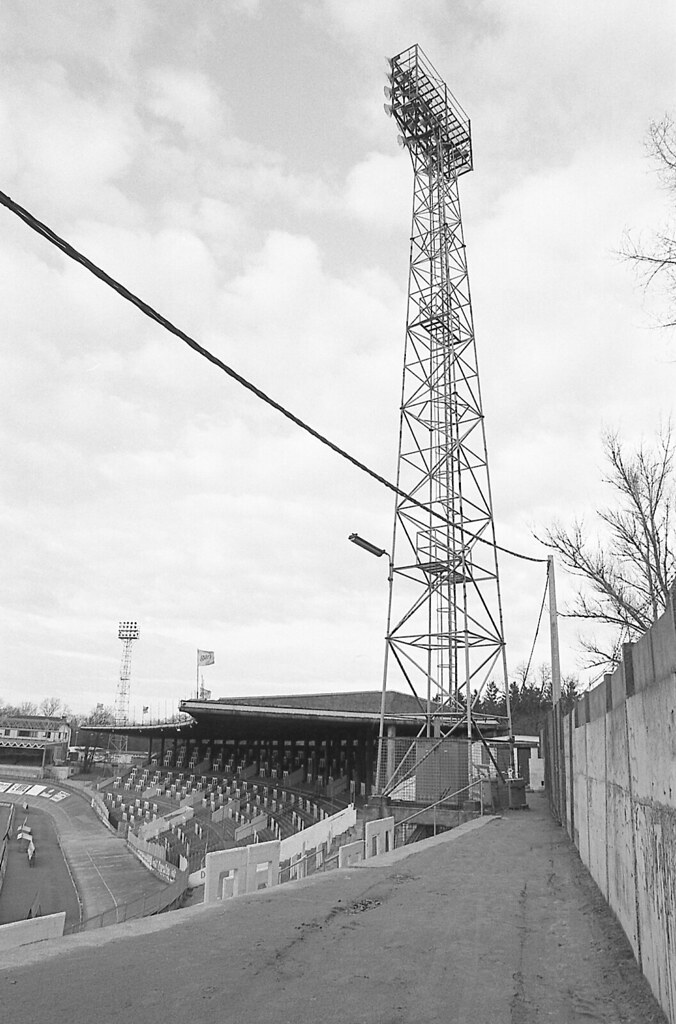
Stade Vélodrome de Rocourt
In the good old days in 1994 (7/8).
© Gérard Guissard • Flickr
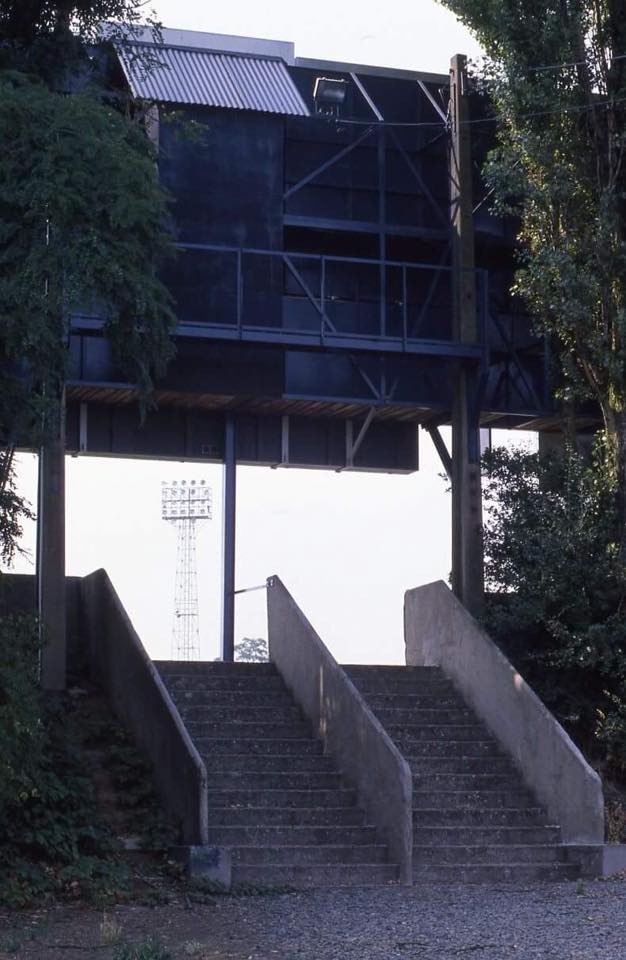
Stade Vélodrome de Rocourt
In the good old days in 1988 (8/8).
© Jacques Ninane • Flickr
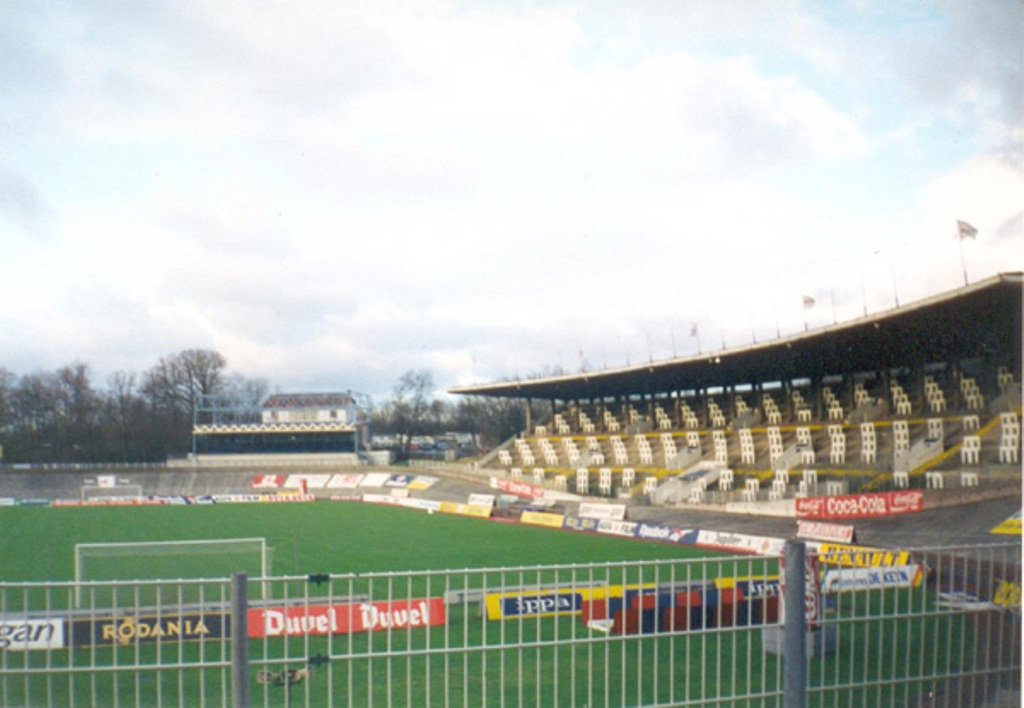
Stade Vélodrome de Rocourt
Disappearance of the lighting pylons is the beginning of the end.
© rfcliege.be
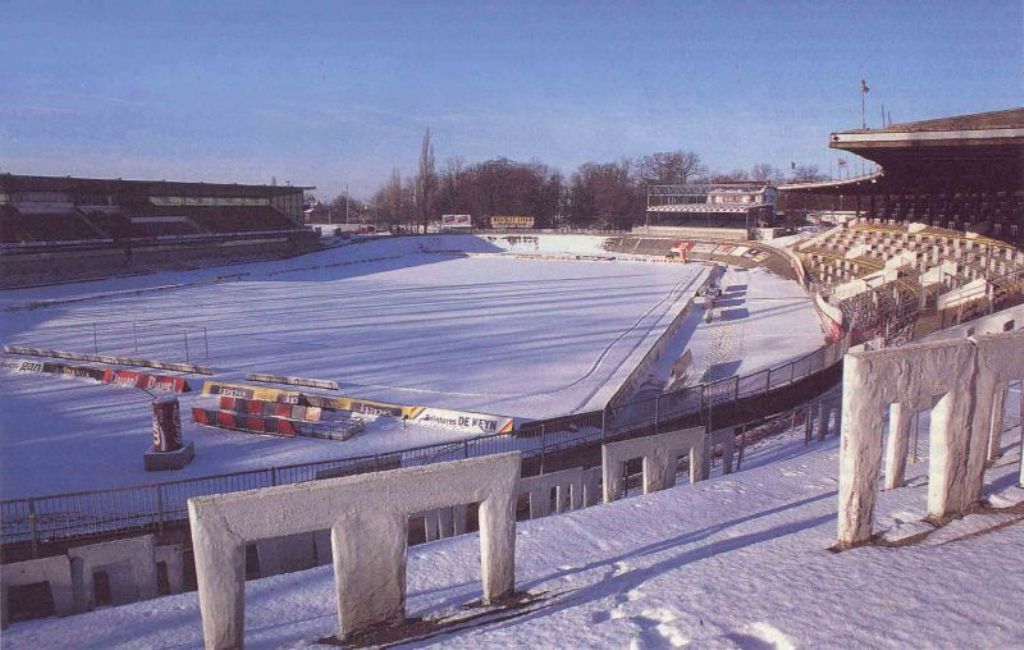
Stade Vélodrome de Rocourt
The venerable stadium of Rocourt soon abandoned, under the snow.
© rfcliege.be
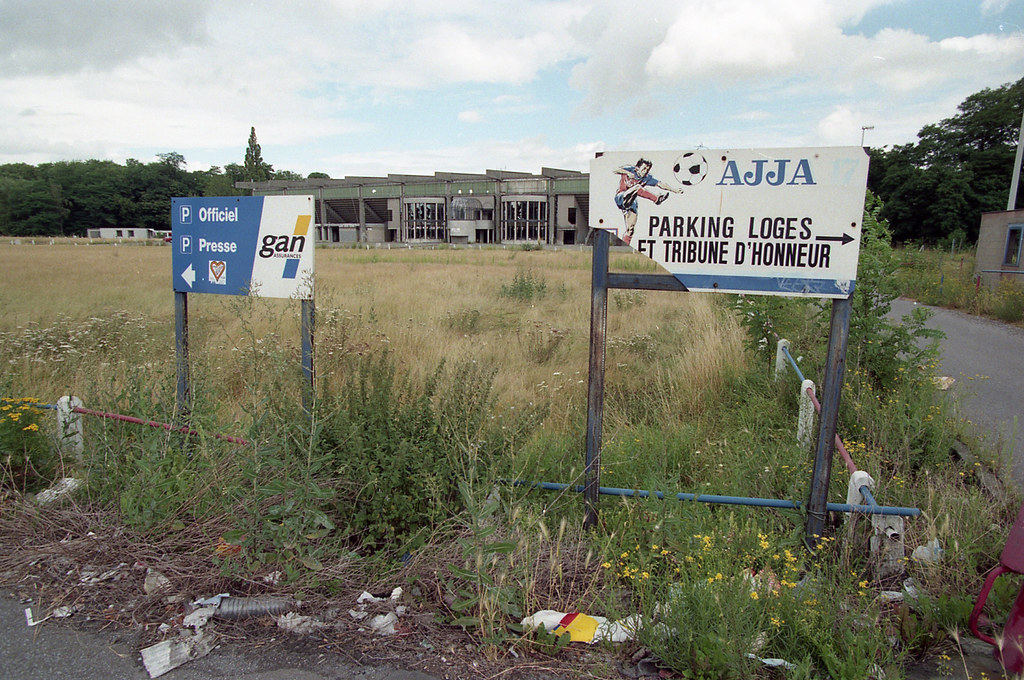
Stade Vélodrome de Rocourt
Abandonment & vandalism in 1995 (1/14).
The entrance to the site, Chaussée de Tongres.
© Gérard Guissard • Flickr
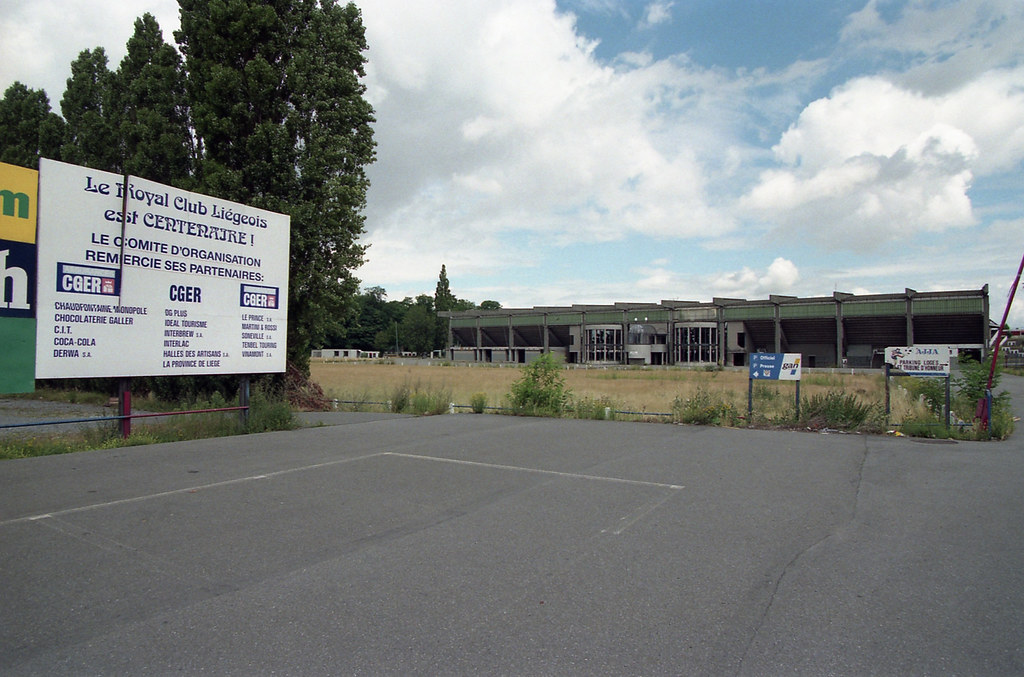
Stade Vélodrome de Rocourt
Abandonment & vandalism in 1995 (2/14).
© Gérard Guissard • Flickr
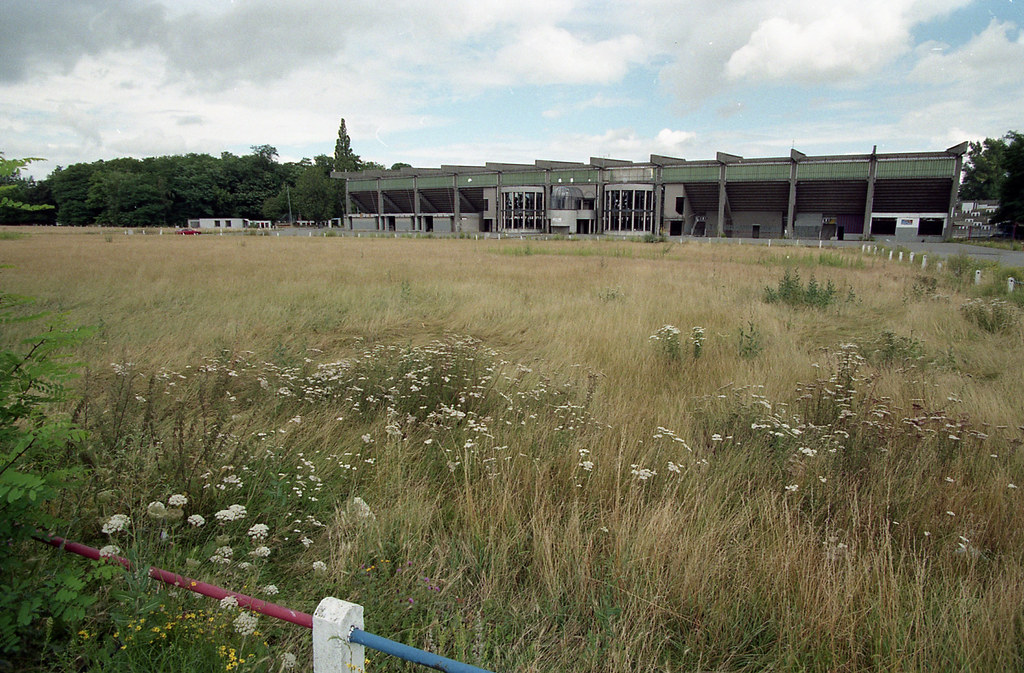
Stade Vélodrome de Rocourt
Abandonment & vandalism in 1995 (3/14).
One of the former training grounds.
© Gérard Guissard • Flickr
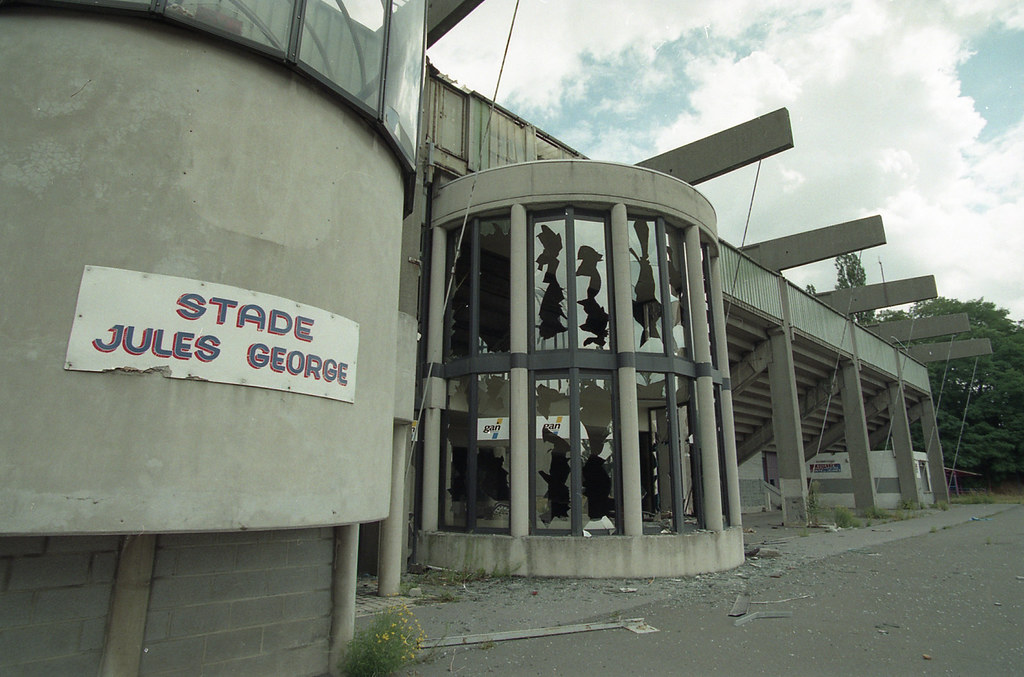
Stade Vélodrome de Rocourt
Abandonment & vandalism in 1995 (4/14).
© Gérard Guissard • Flickr
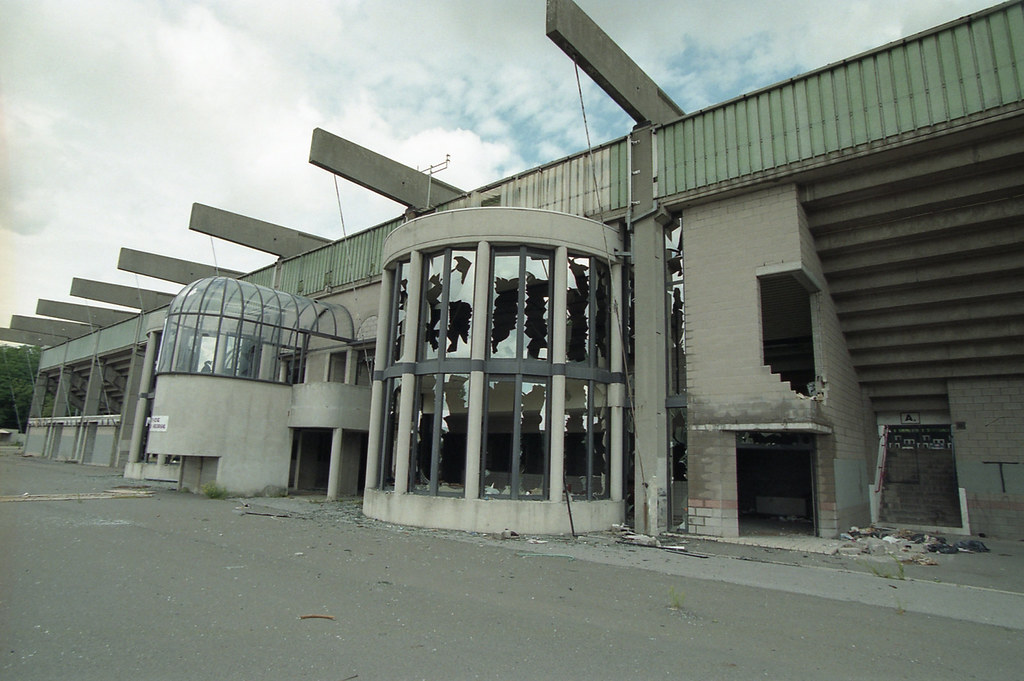
Stade Vélodrome de Rocourt
Abandonment & vandalism in 1995 (5/14).
© Gérard Guissard • Flickr
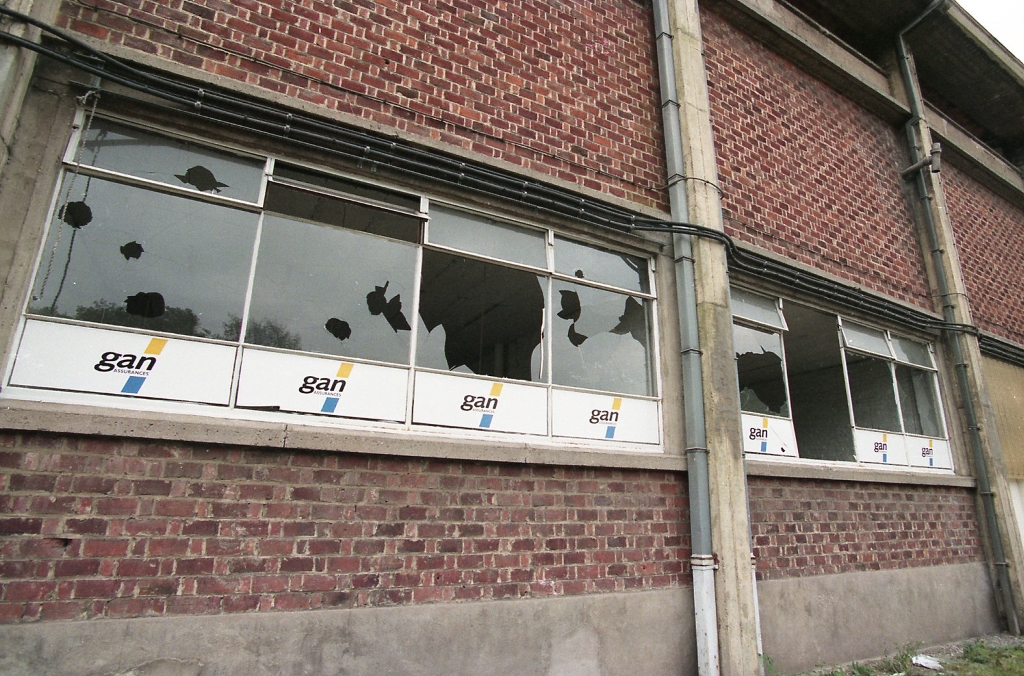
Stade Vélodrome de Rocourt
Abandonment & vandalism in 1995 (6/14).
The facade of the standing stand.
© Gérard Guissard • Flickr
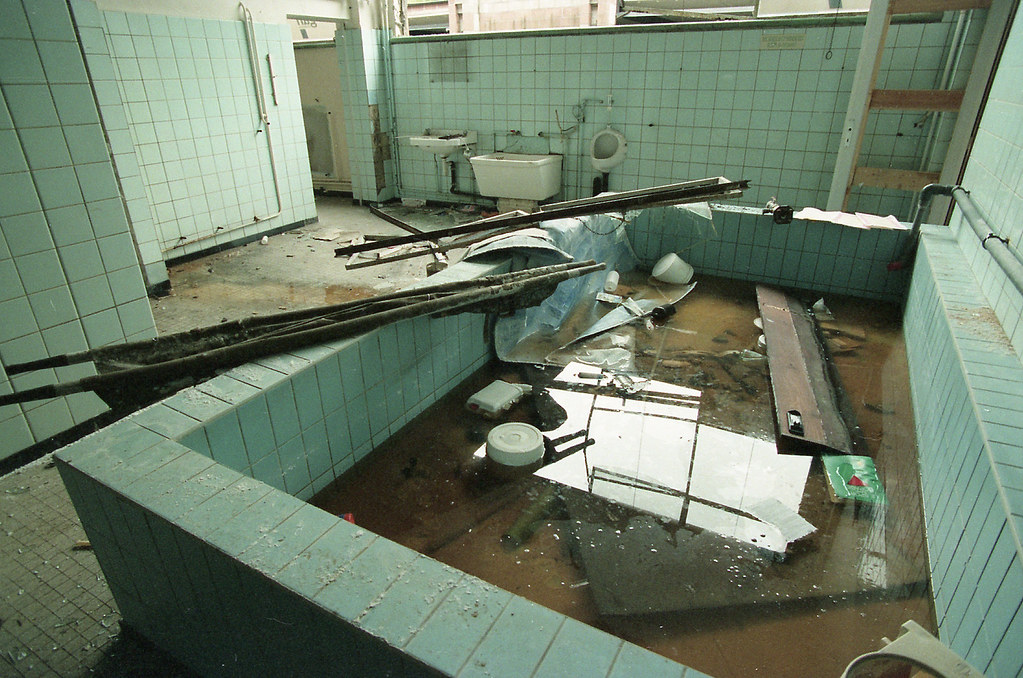
Stade Vélodrome de Rocourt
Abandonment & vandalism in 1995 (7/14).
Ransacked locker-room.
© Gérard Guissard • Flickr
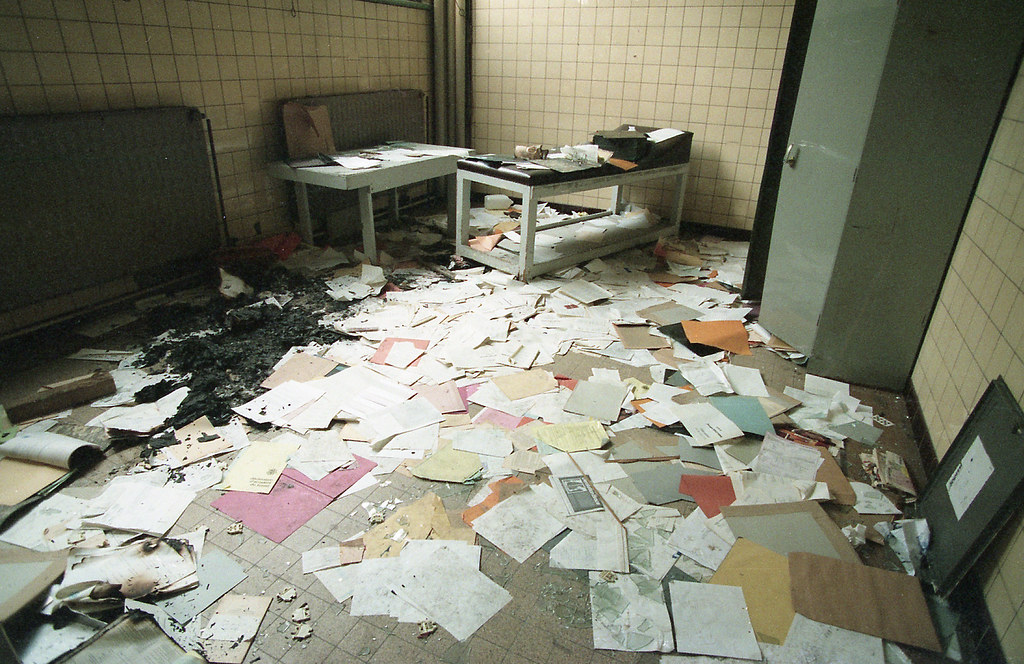
Stade Vélodrome de Rocourt
Abandonment & vandalism in 1995 (8/14).
A medical office (without certainty...).
© Gérard Guissard • Flickr
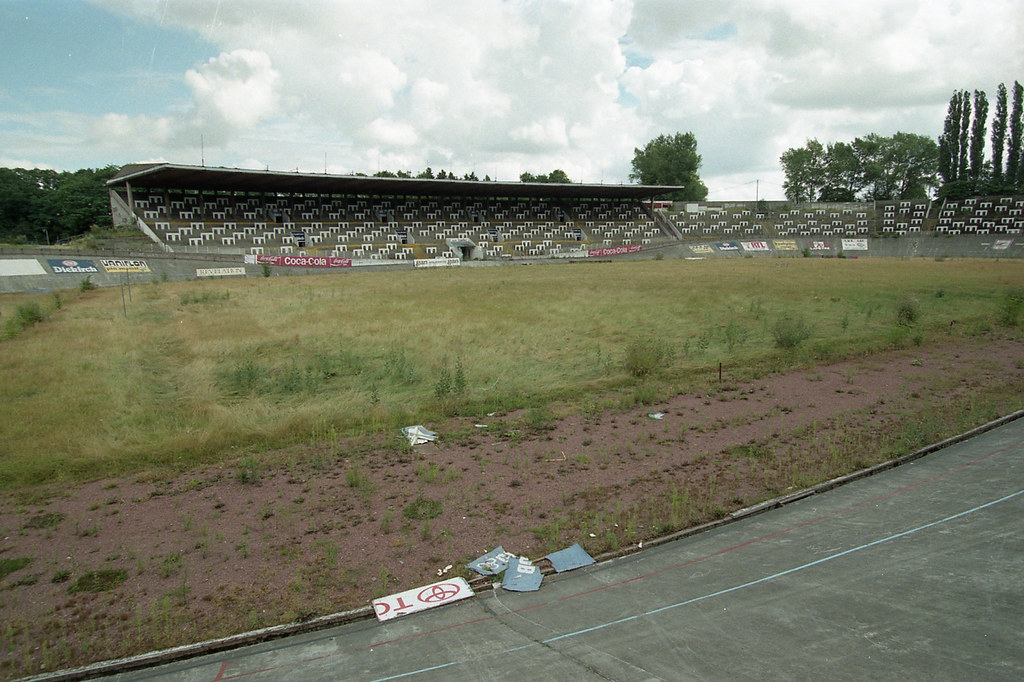
Stade Vélodrome de Rocourt
Abandonment & vandalism in 1995 (9/14).
The good old stadium in perdition...
© Gérard Guissard • Flickr
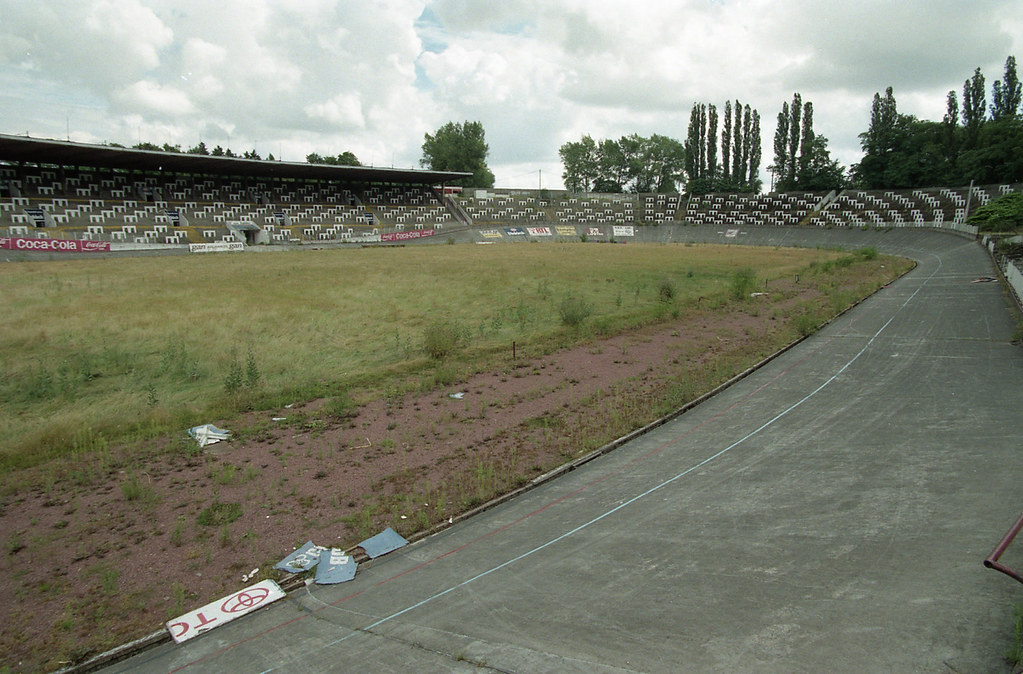
Stade Vélodrome de Rocourt
Abandonment & vandalism in 1995 (10/14).
© Gérard Guissard • Flickr
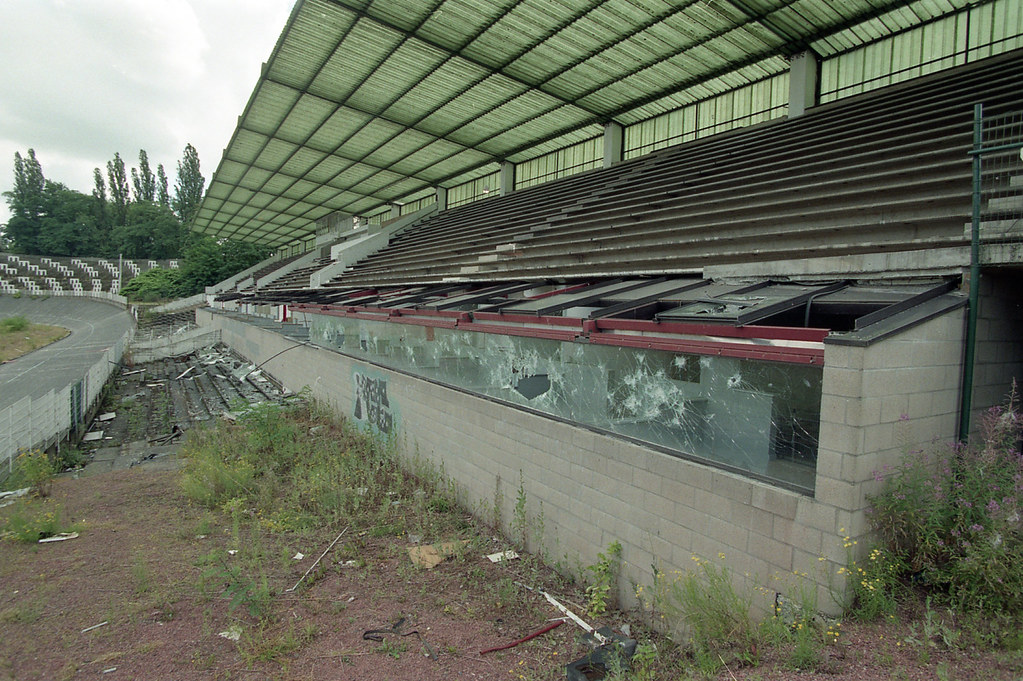
Stade Vélodrome de Rocourt
Abandonment & vandalism in 1995 (11/14).
The remains of the main stand and skyboxes.
© Gérard Guissard • Flickr
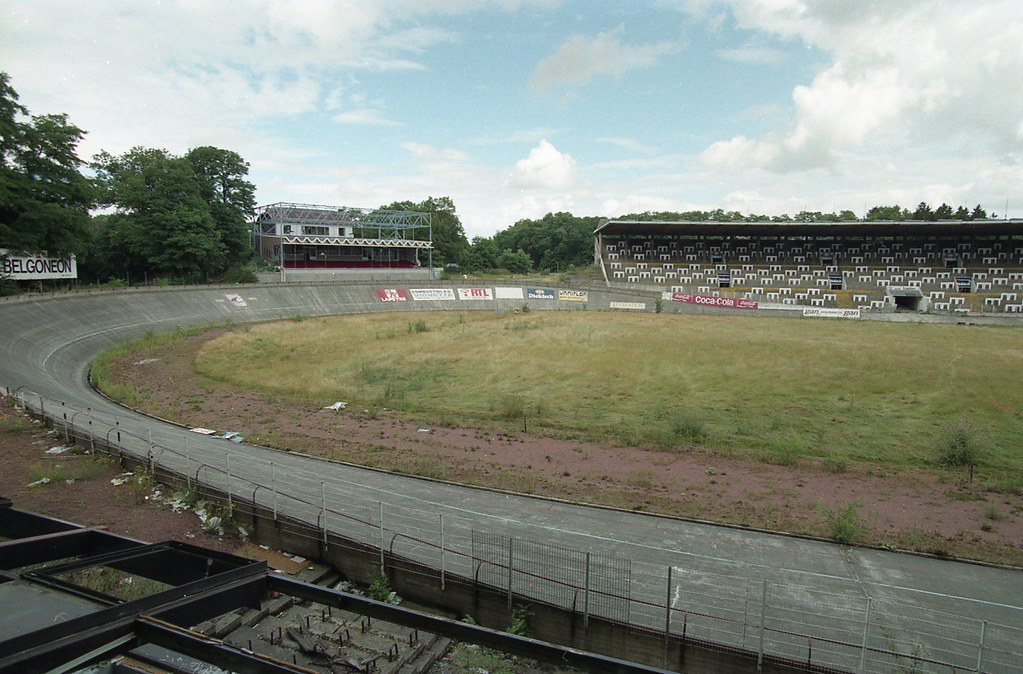
Stade Vélodrome de Rocourt
Abandonment & vandalism in 1995 (12/14).
© Gérard Guissard • Flickr
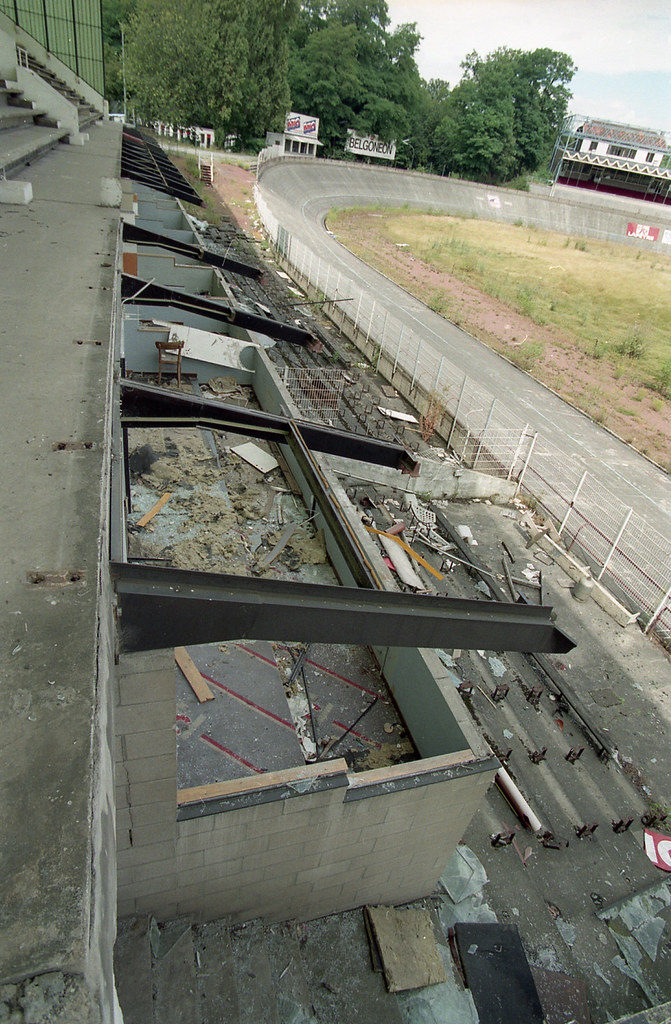
Stade Vélodrome de Rocourt
Abandonment & vandalism in 1995 (13/14).
© Gérard Guissard • Flickr
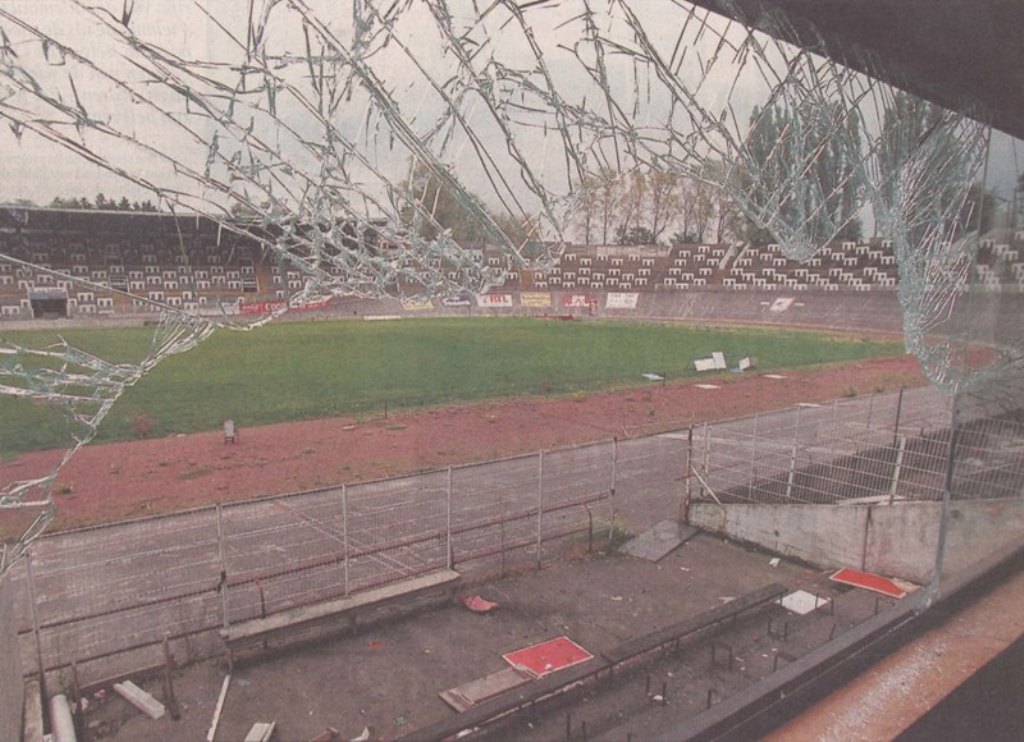
Stade Vélodrome de Rocourt
Abandonment & vandalism in 1995 (14/14).
© rfcliege.be
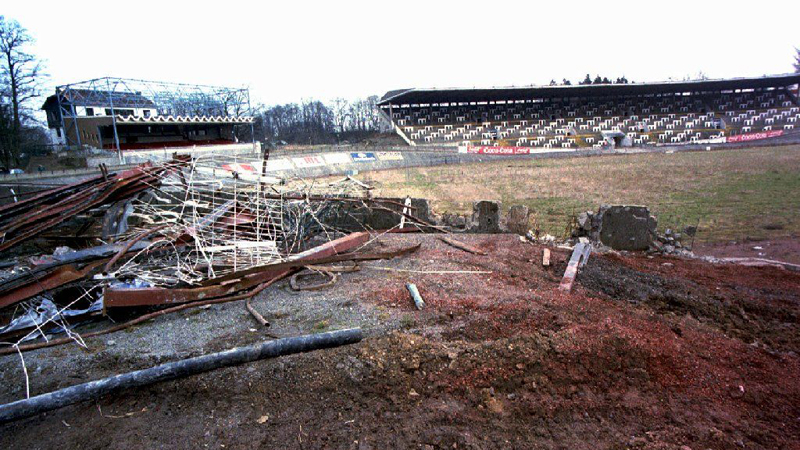
Stade Vélodrome de Rocourt
Demolition in 1997 (1/8).
© rfcliege.be
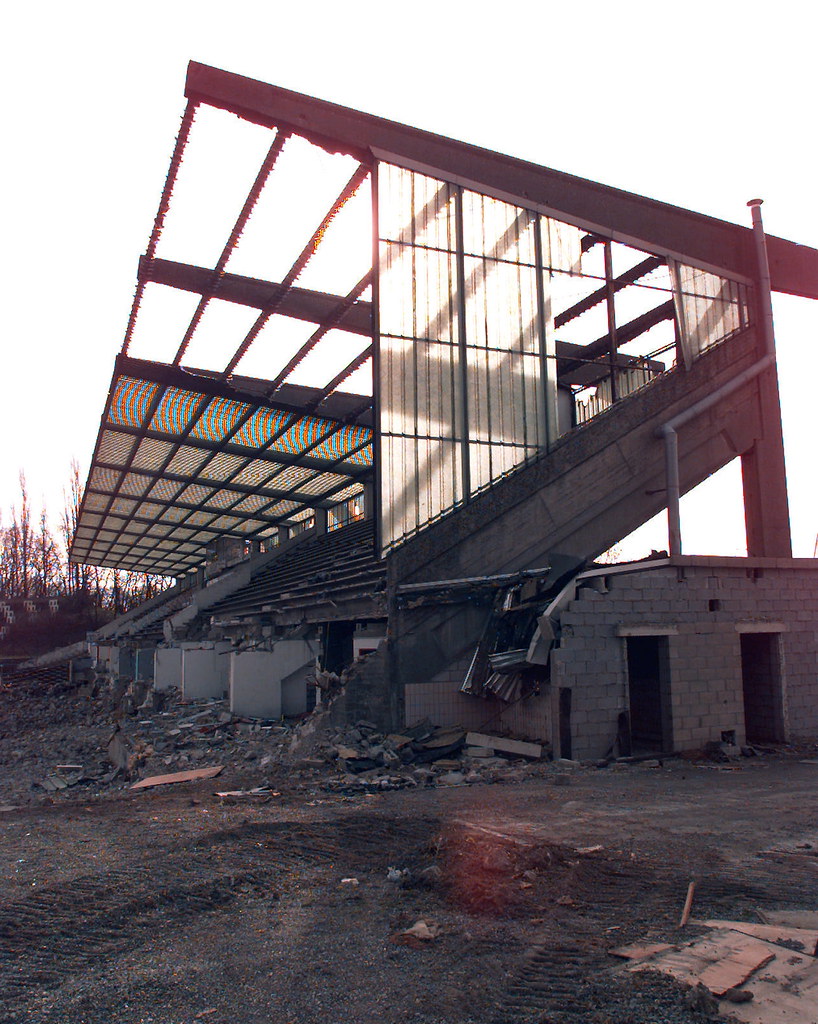
Stade Vélodrome de Rocourt
Demolition in 1997 (2/8).
© Gérard Guissard • Flickr
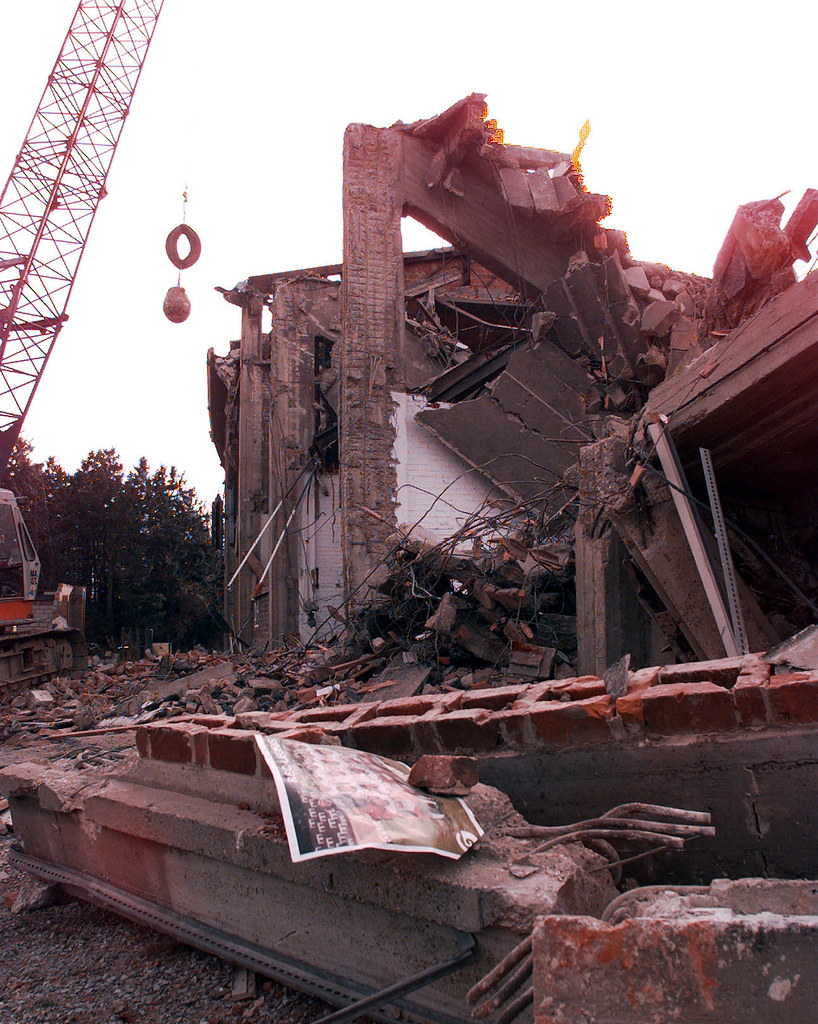
Stade Vélodrome de Rocourt
Demolition in 1997 (3/8).
© Gérard Guissard • Flickr
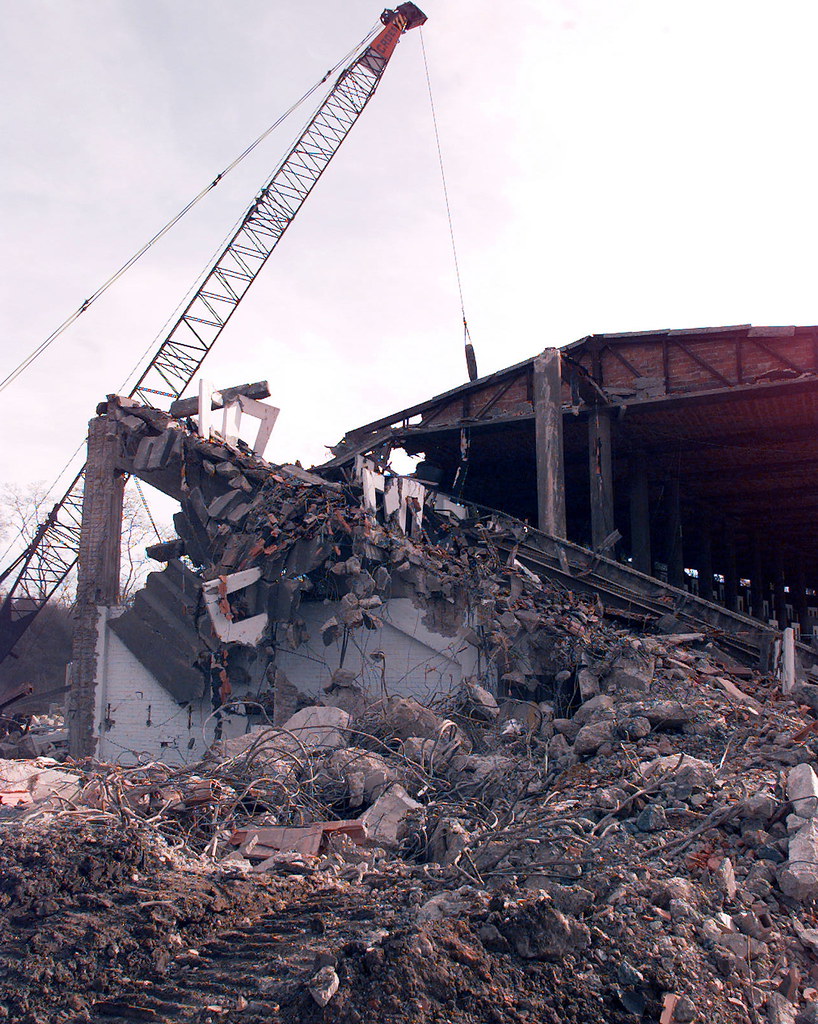
Stade Vélodrome de Rocourt
Demolition in 1997 (4/8).
© Gérard Guissard • Flickr
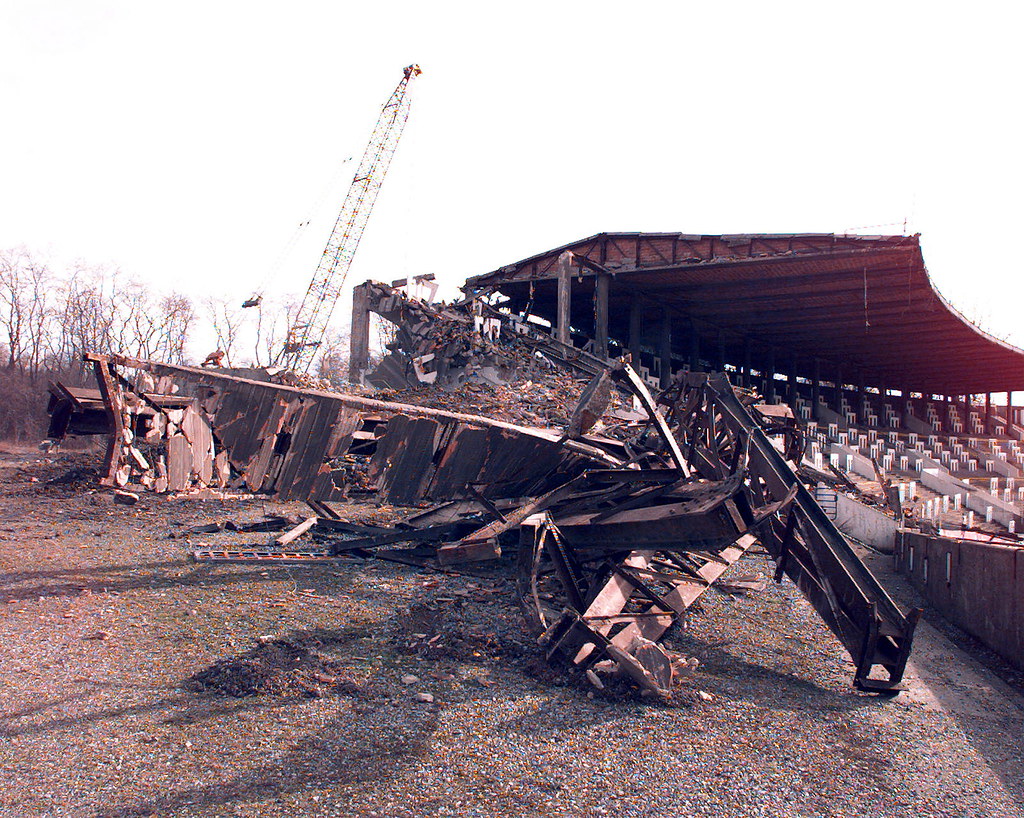
Stade Vélodrome de Rocourt
Demolition in 1997 (5/8).
© Gérard Guissard • Flickr
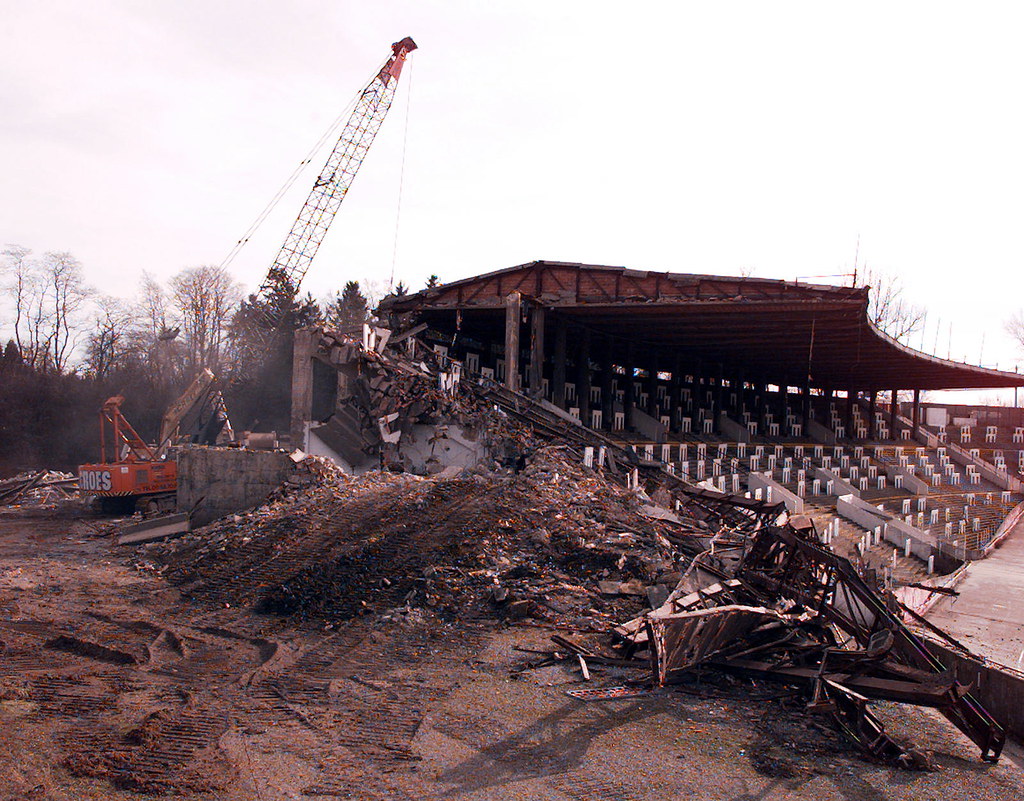
Stade Vélodrome de Rocourt
Demolition in 1997 (6/8).
We can notice that despite the so-called state of ruin of the roof of the stand, it remains in
place despite the current demolition.
© Gérard Guissard • Flickr
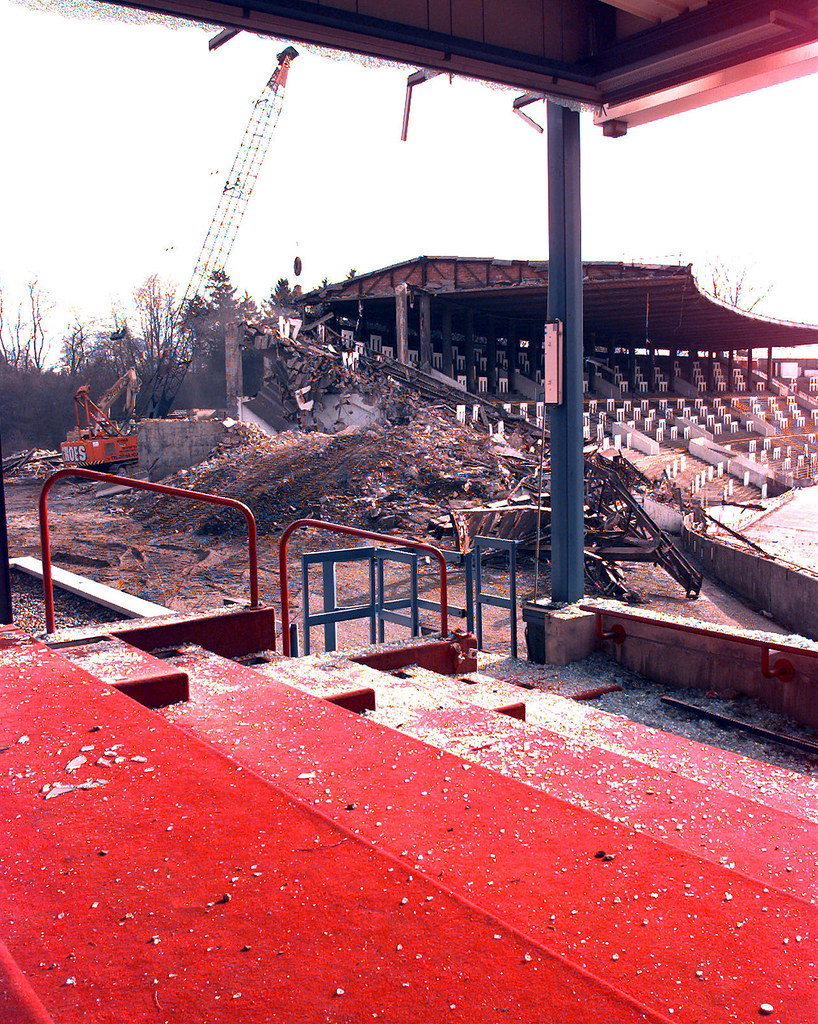
Stade Vélodrome de Rocourt
Demolition in 1997 (7/8).
From the business-seats.
© Gérard Guissard • Flickr
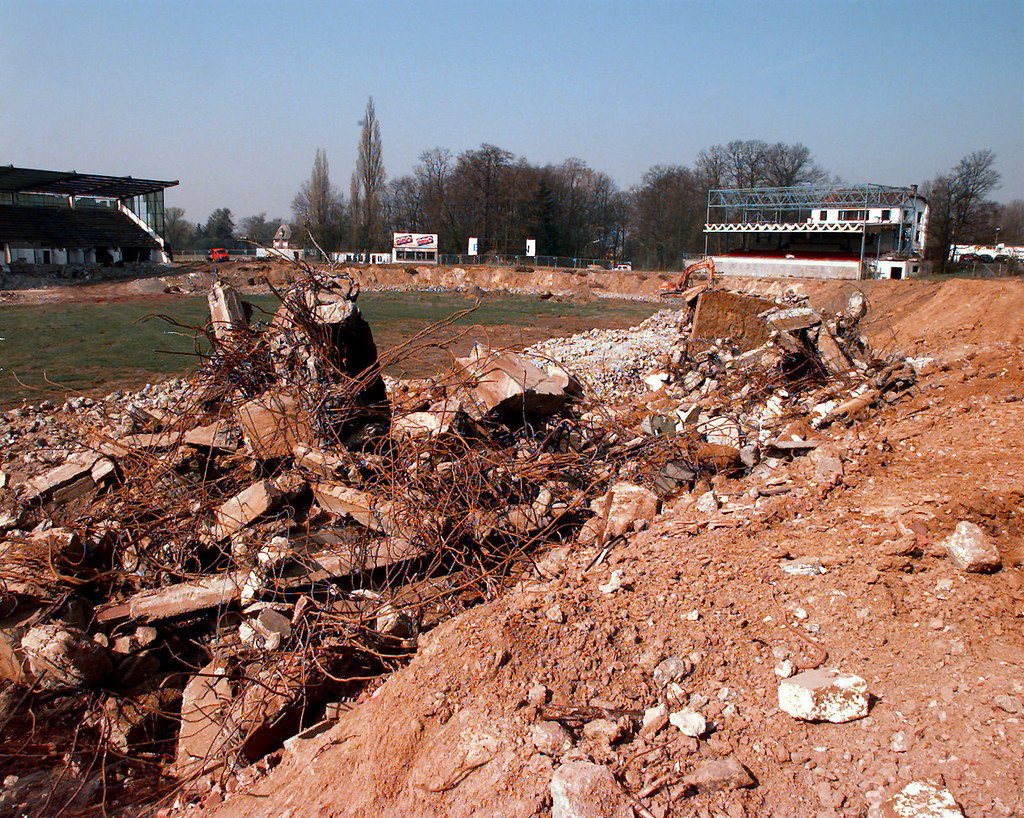
Stade Vélodrome de Rocourt
Demolition in 1997 (8/8).
© Gérard Guissard • Flickr
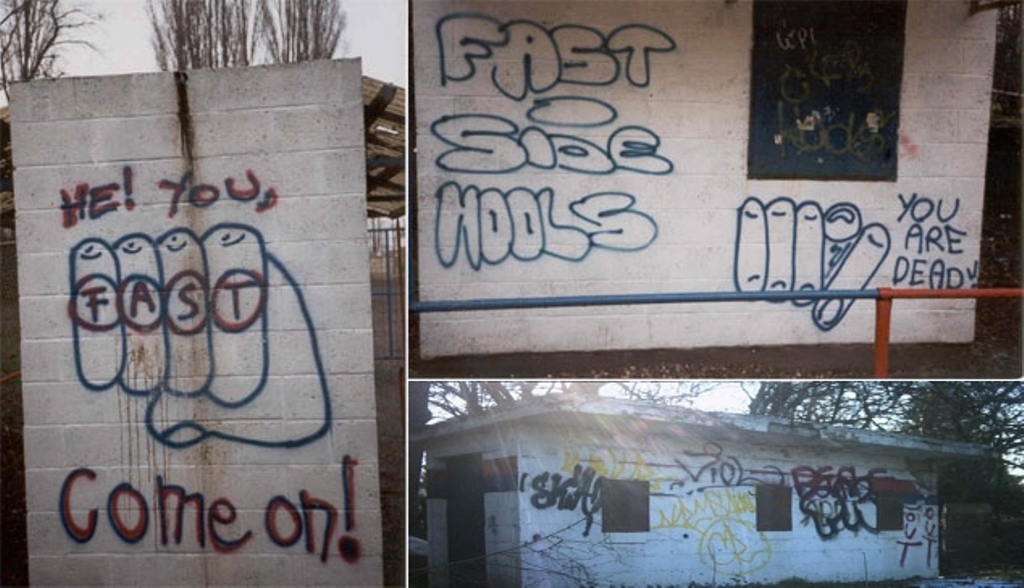
Stade Vélodrome de Rocourt
The Fast Side, the hottest supporters, left its signature on the visitors ticketing, shortly before the demolition.
© rfcliege.be
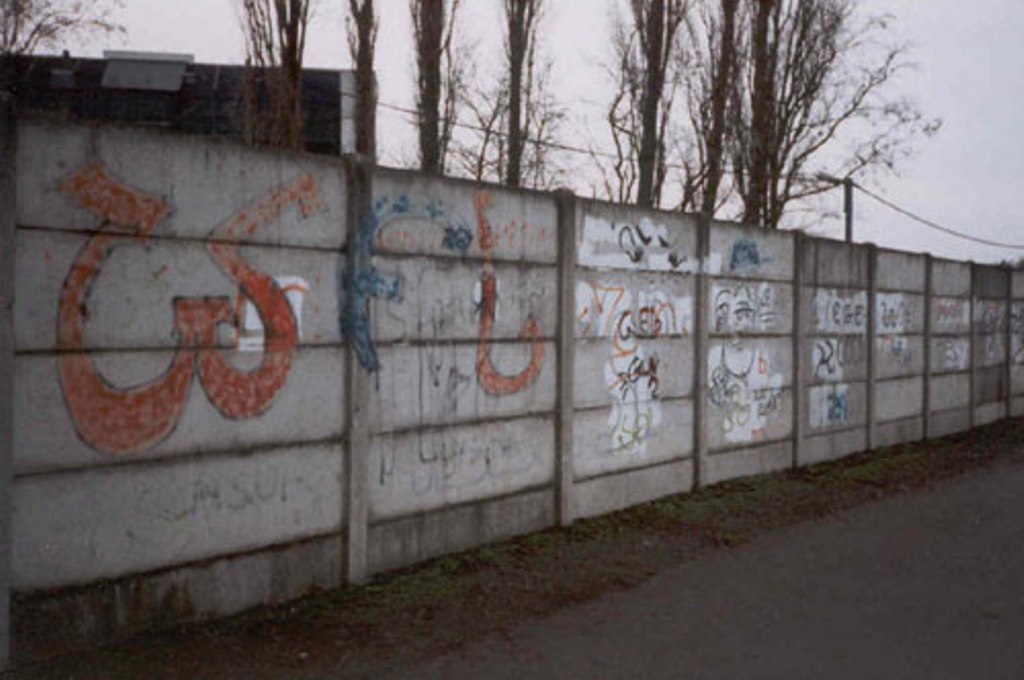
Stade Vélodrome de Rocourt
One of the only vestiges of the enclosure, along Rue du Stade.
© rfcliege.be
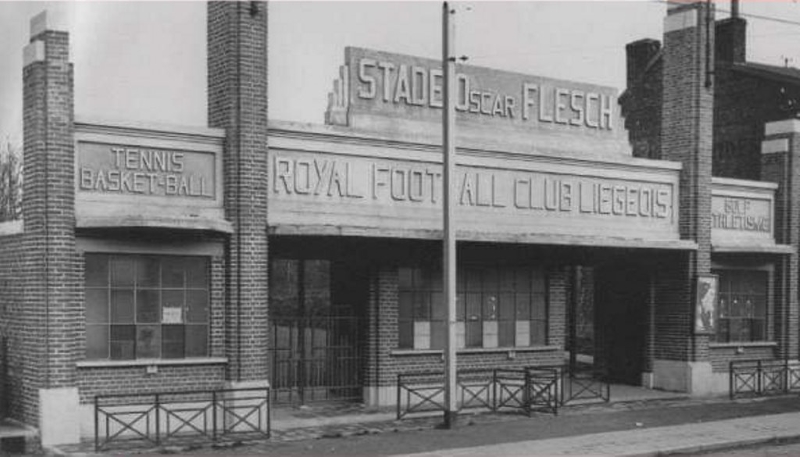
Stade Vélodrome de Rocourt
The ancient and magnificent Chaussée de Tongres entrance.
© rfcliege.be
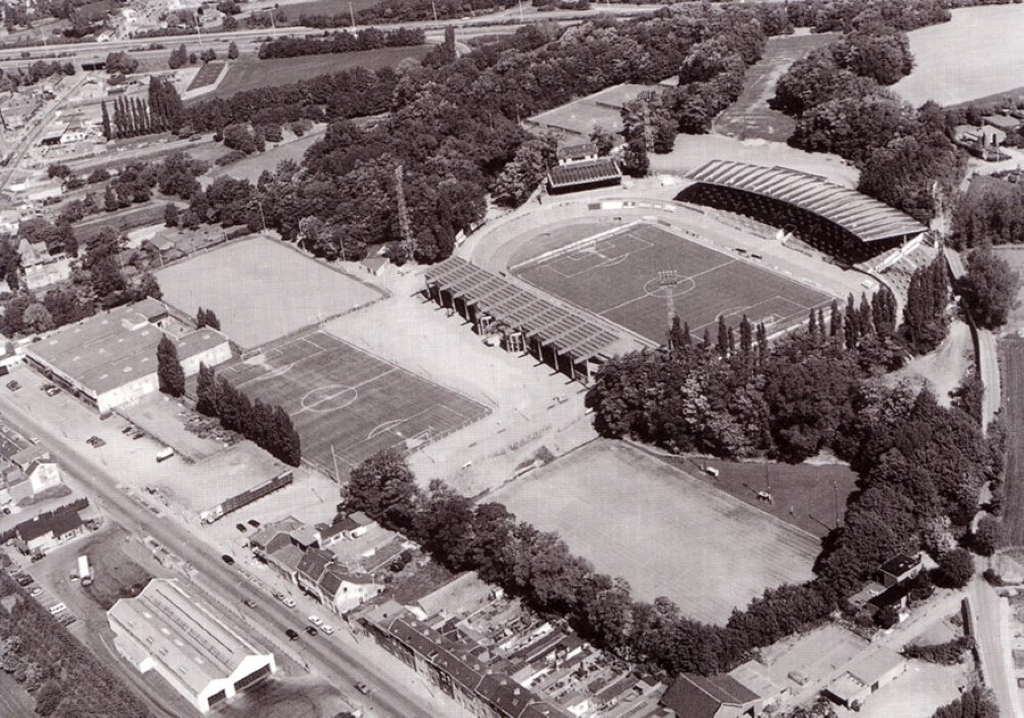
Stade Vélodrome de Rocourt
Aerial view on the velodrome, in better times.
© rfcliege.be
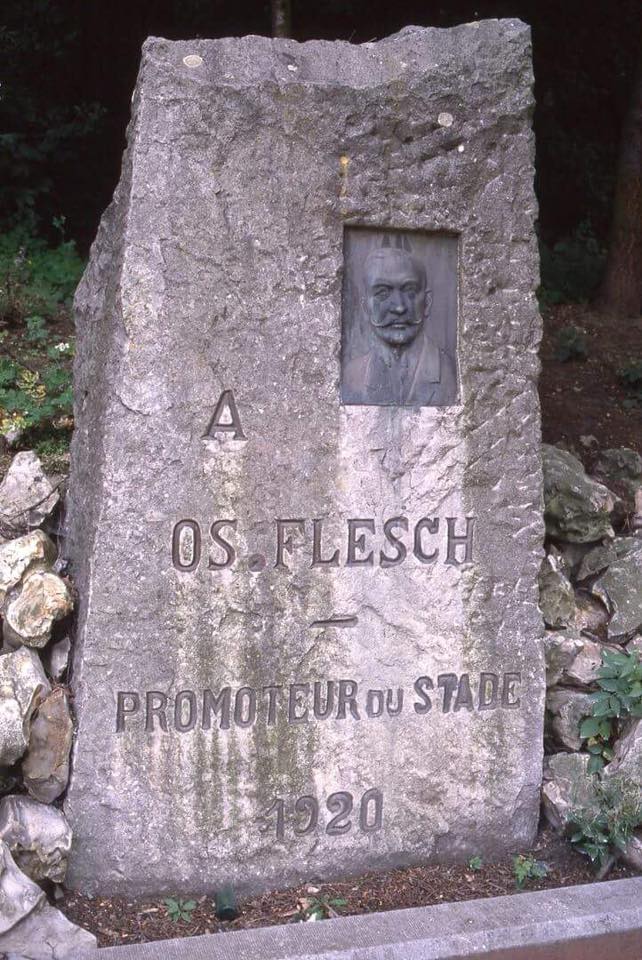
Stade Vélodrome de Rocourt
Stele in honor of the instigator of the stadium. It should be nowadays at the new stadium, Rue de la Tonne.
© Jacques Ninane • Flickr
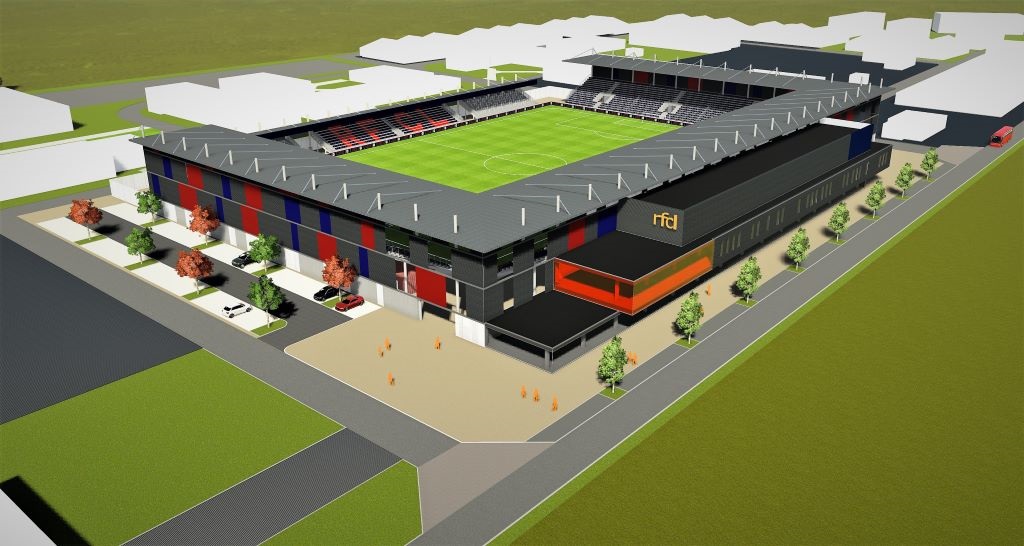
Stade Vélodrome de Rocourt
The final project of the new stadium. It's new but without soul.
© FC Liège
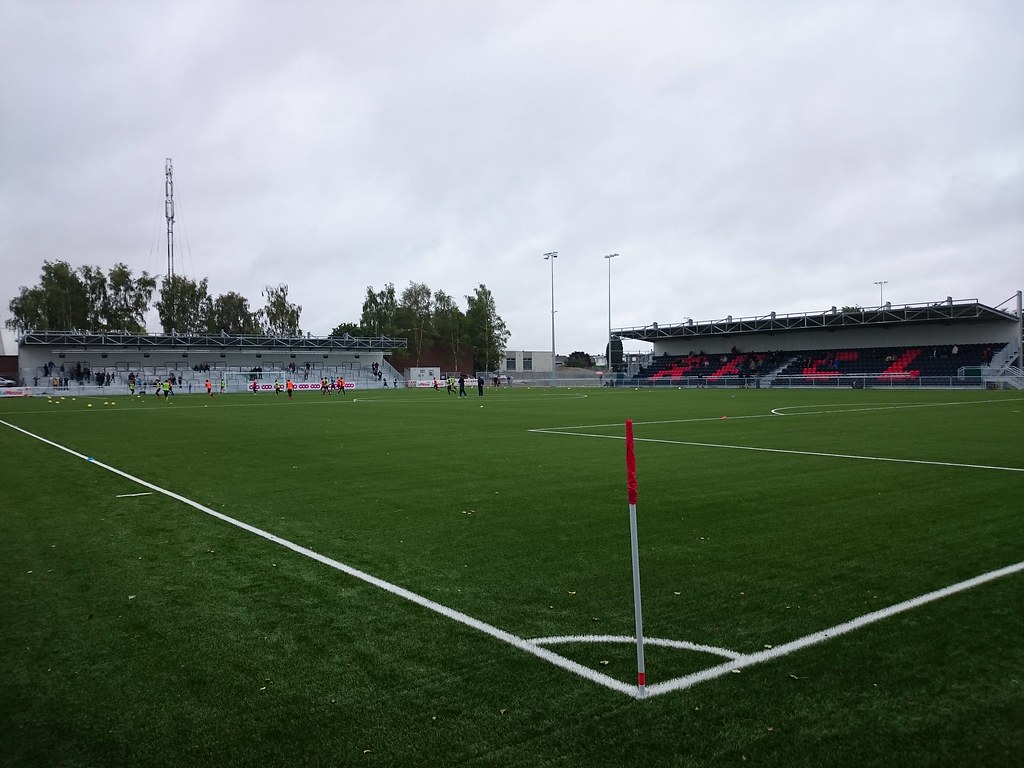
Stade Vélodrome de Rocourt
What has already been achieved. A temporary stadium for a prestigious club...
© FC Liège
Notes
-
This article comes from my former website foothisto.be and was published on February 16, 2012.
It has been somewhat modified and updated lately (July 2019). - Thanks to Gérard Guissard for having permission to use his pictures.
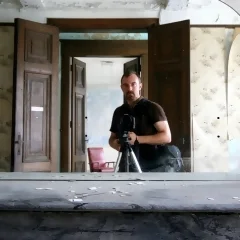
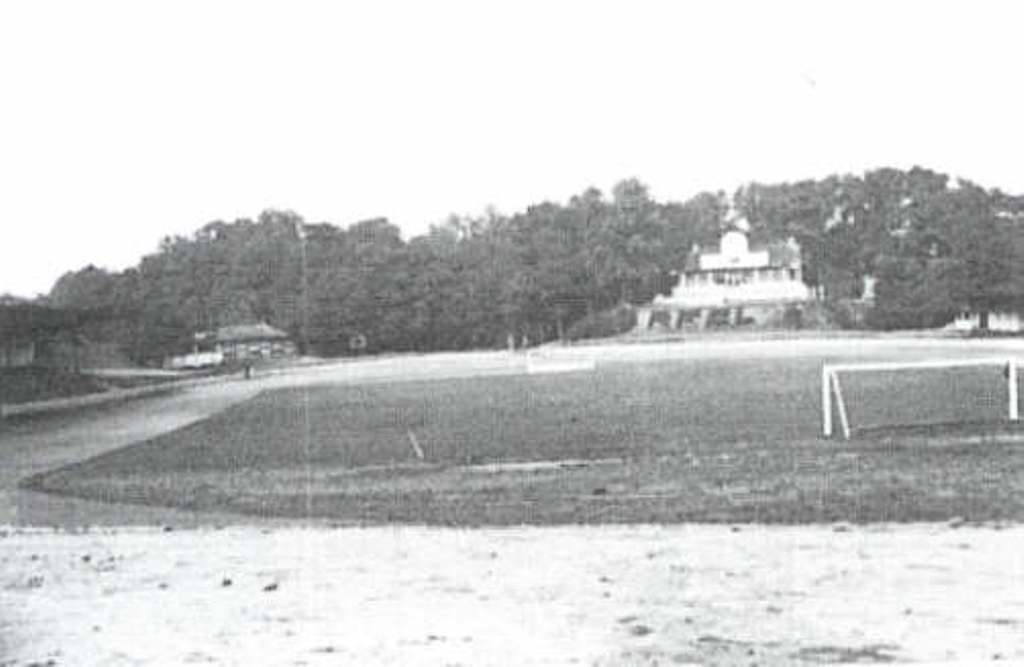
Soyez le premier & devenez quelqu’un de bien • Be the first & become a good person